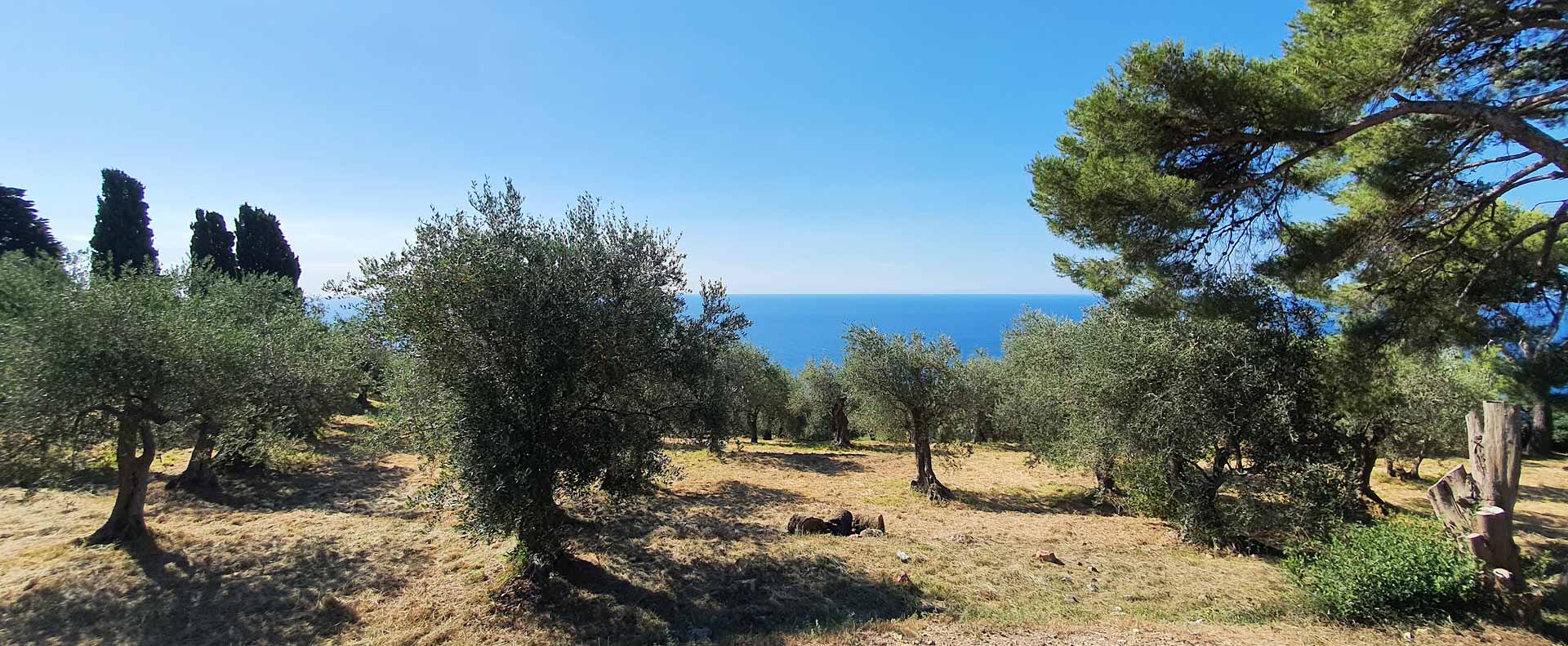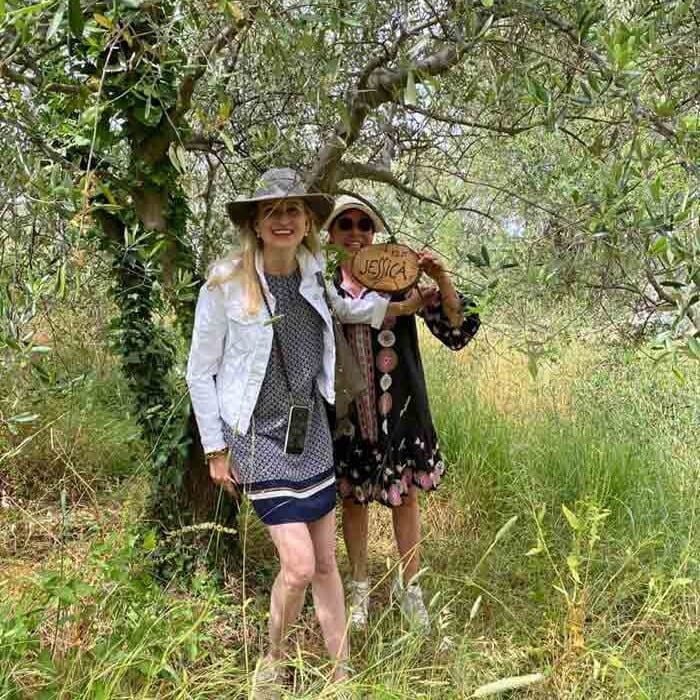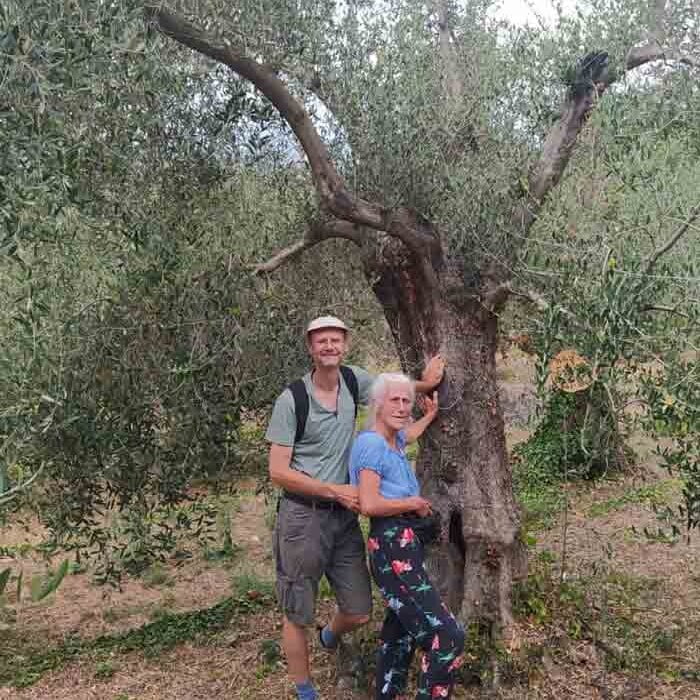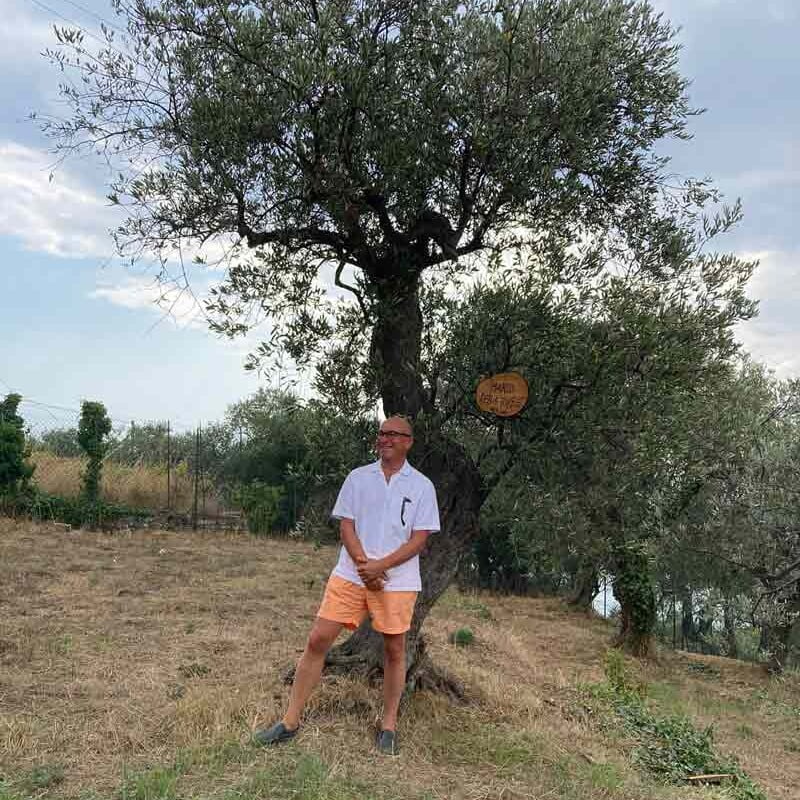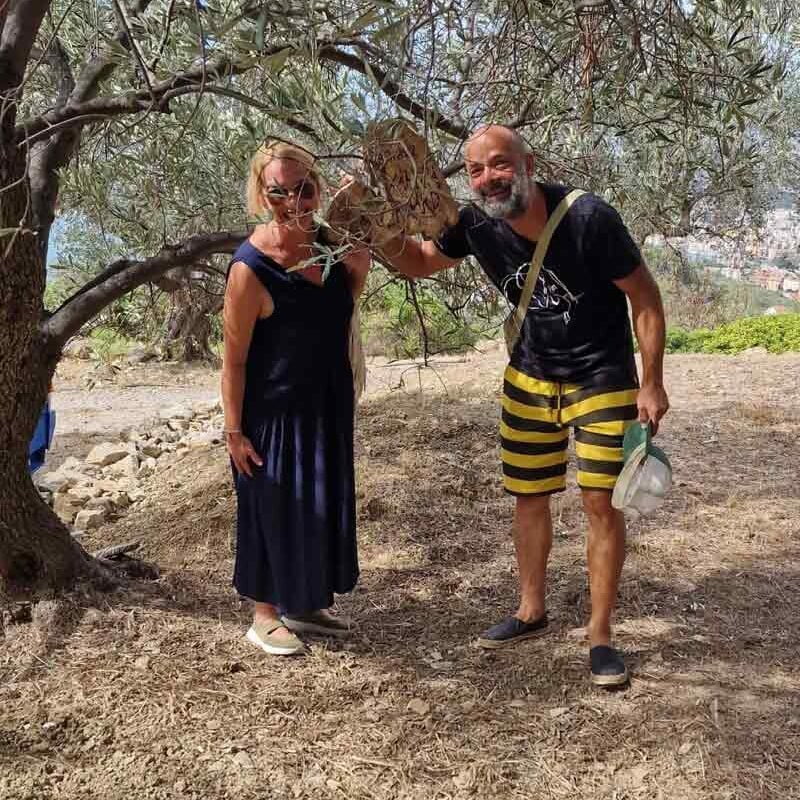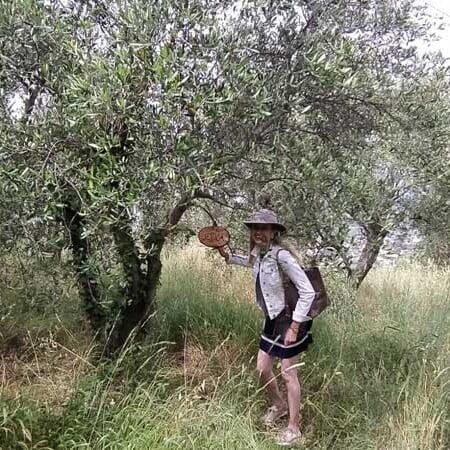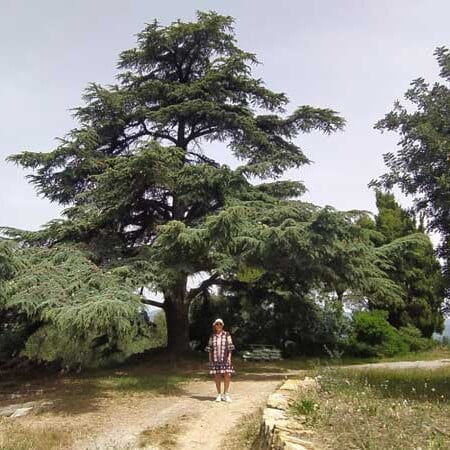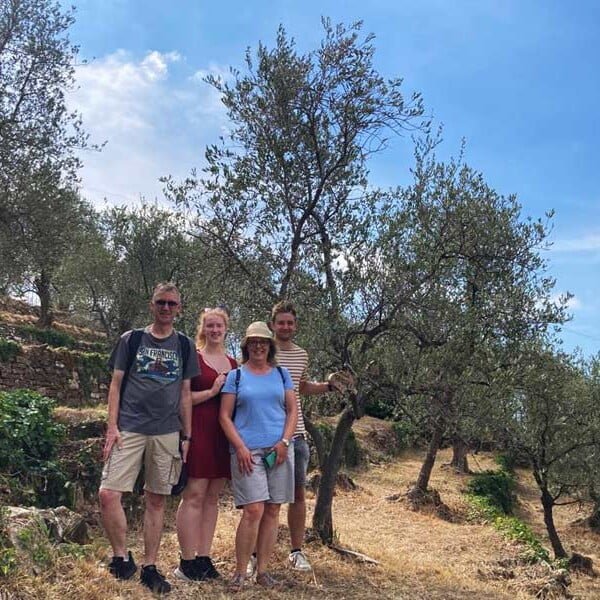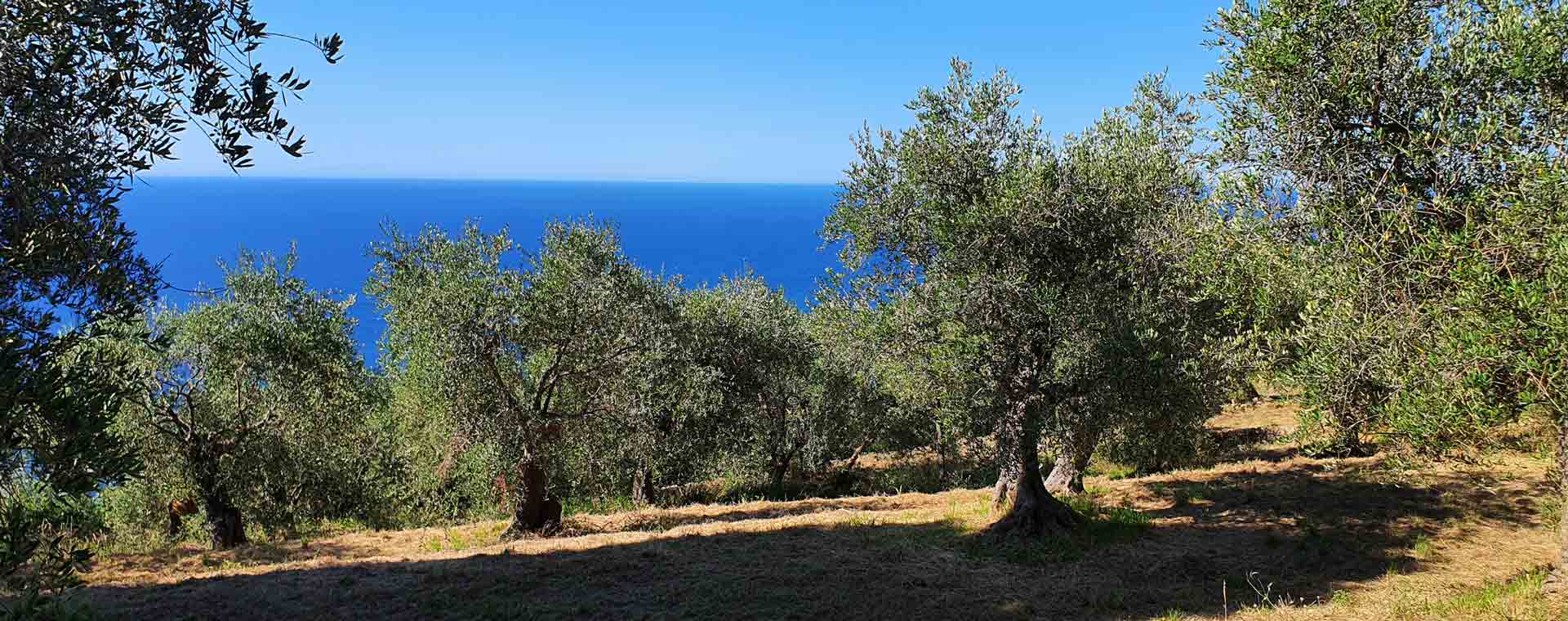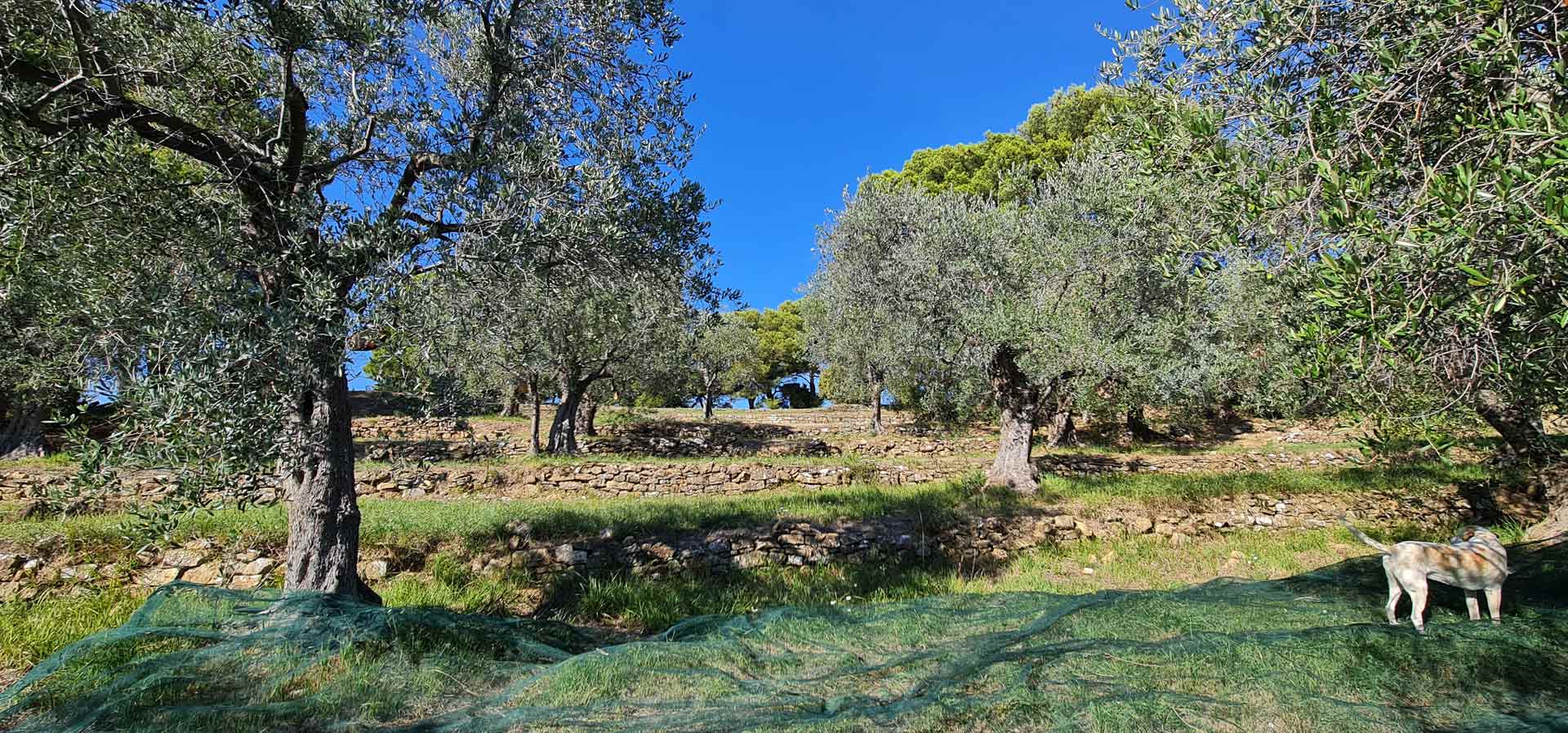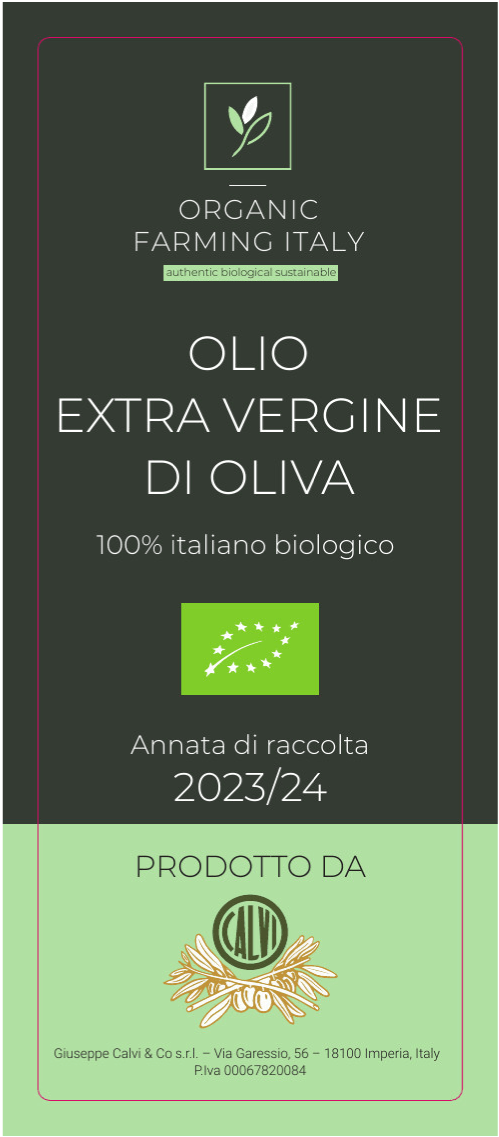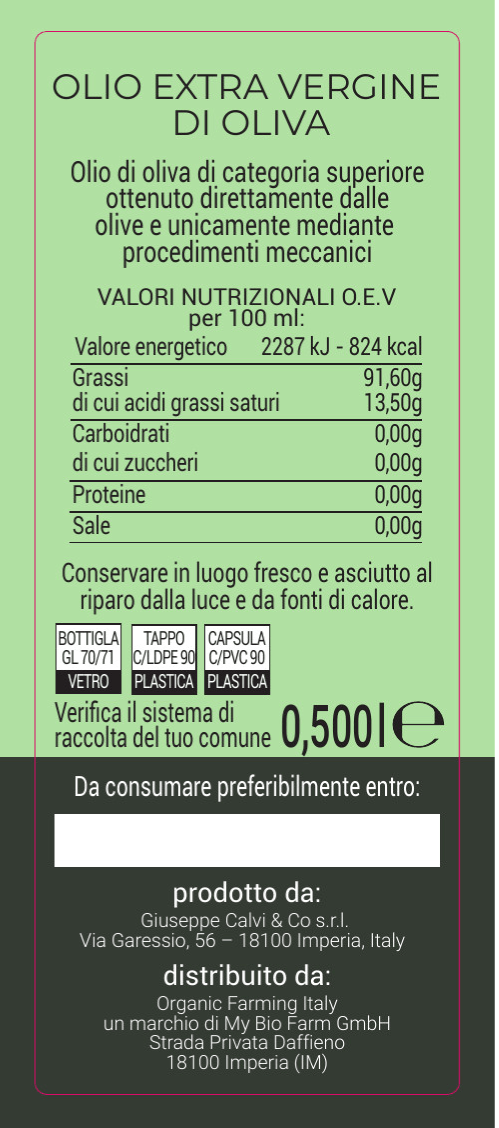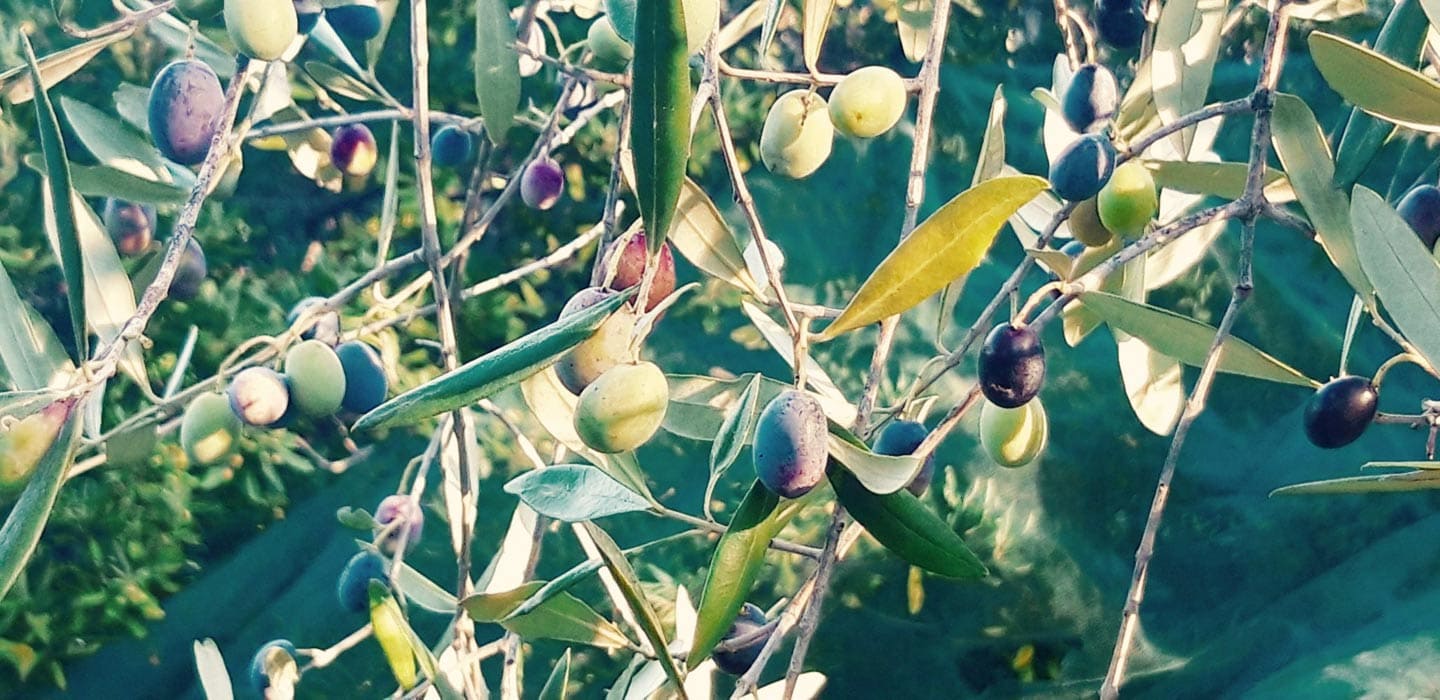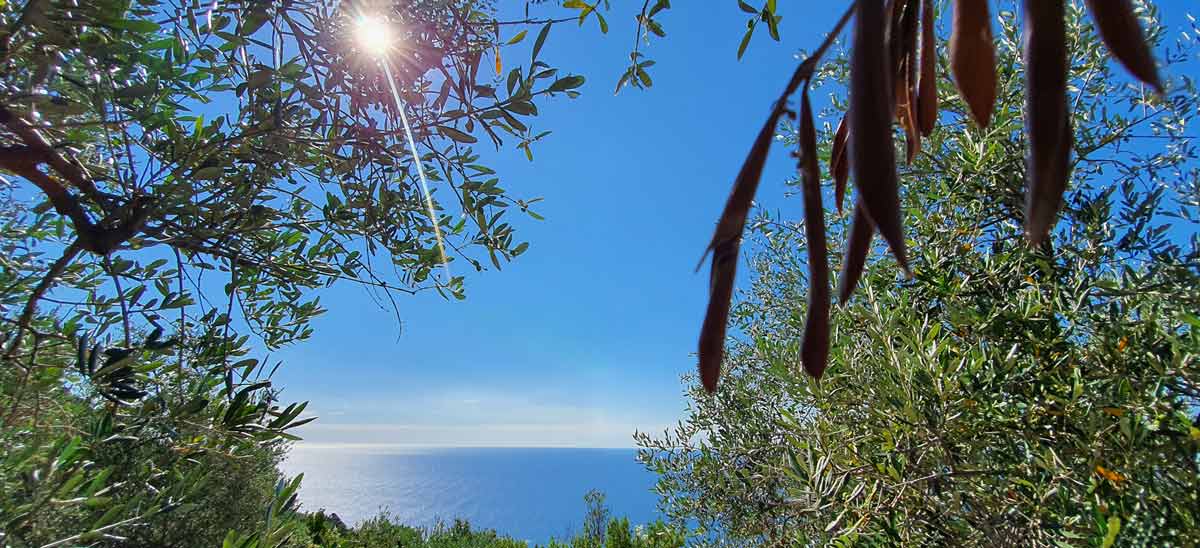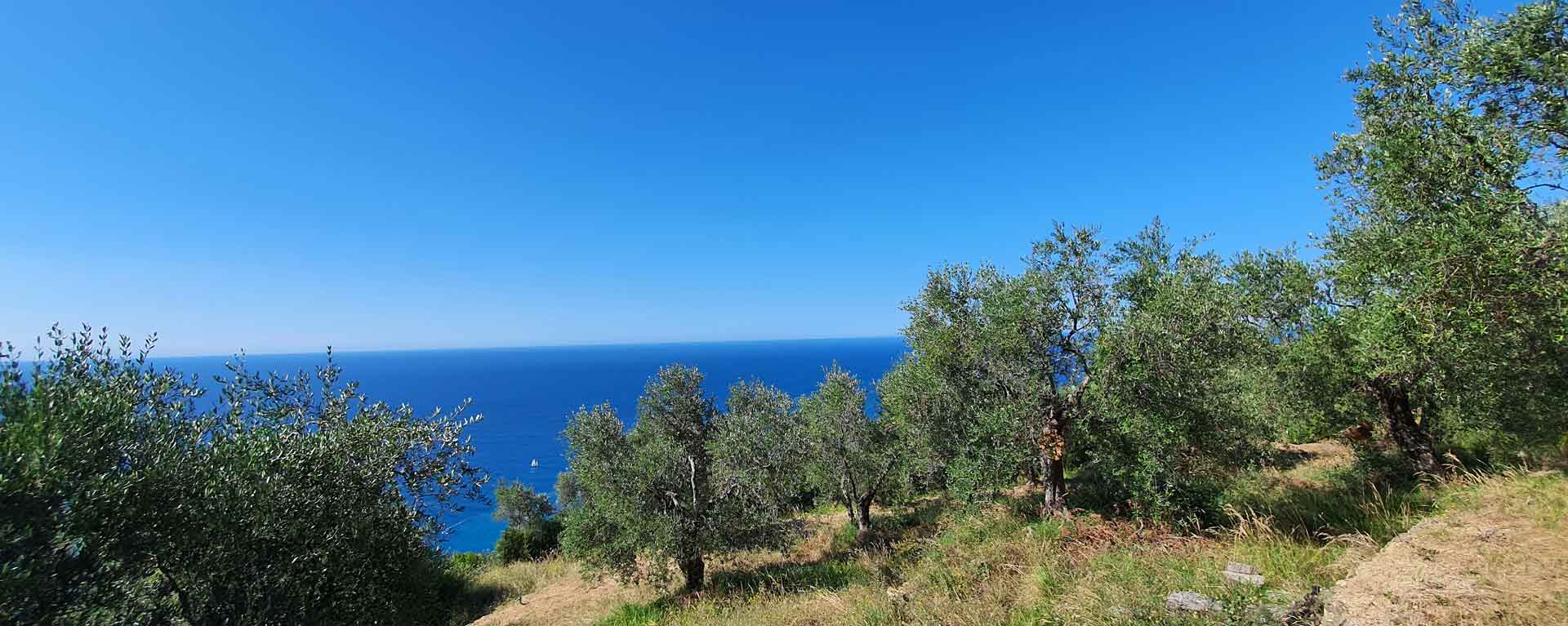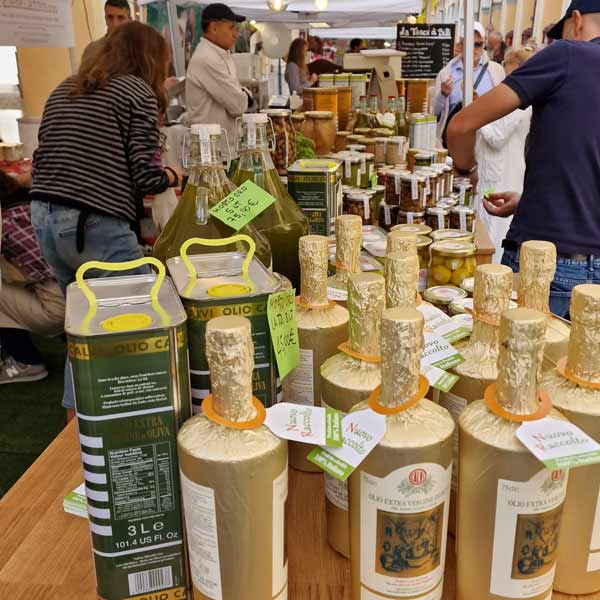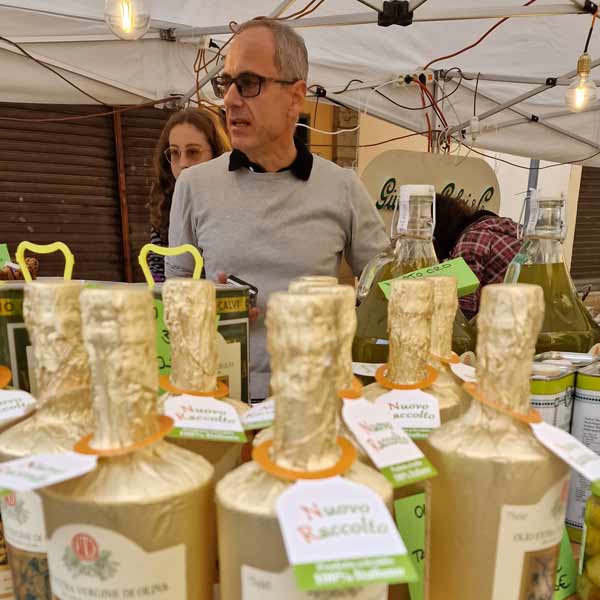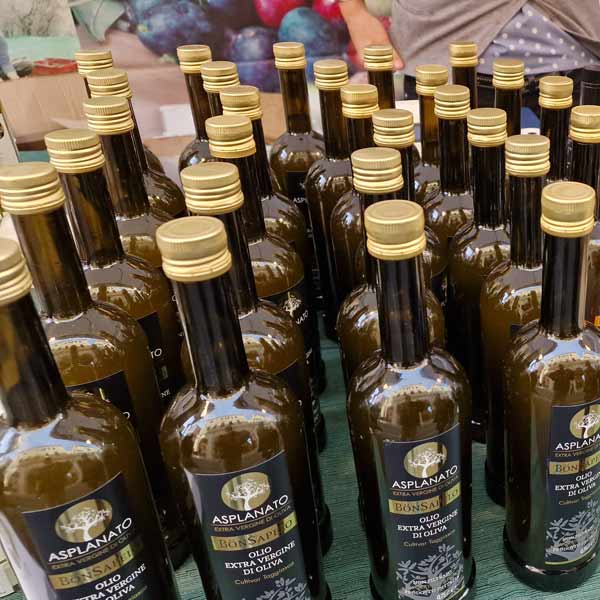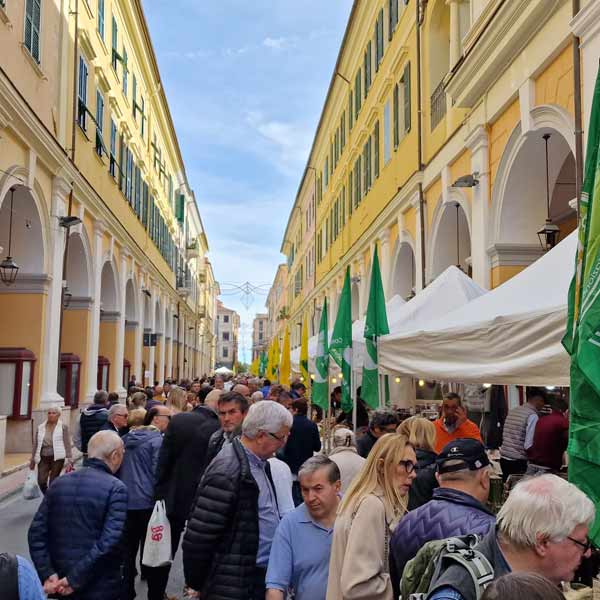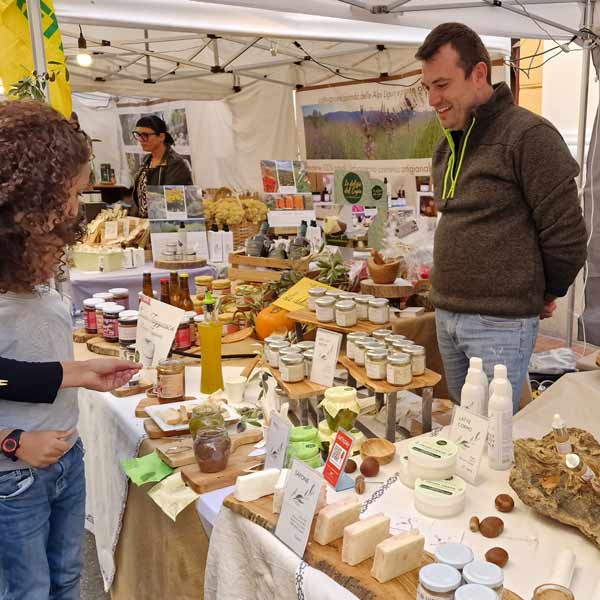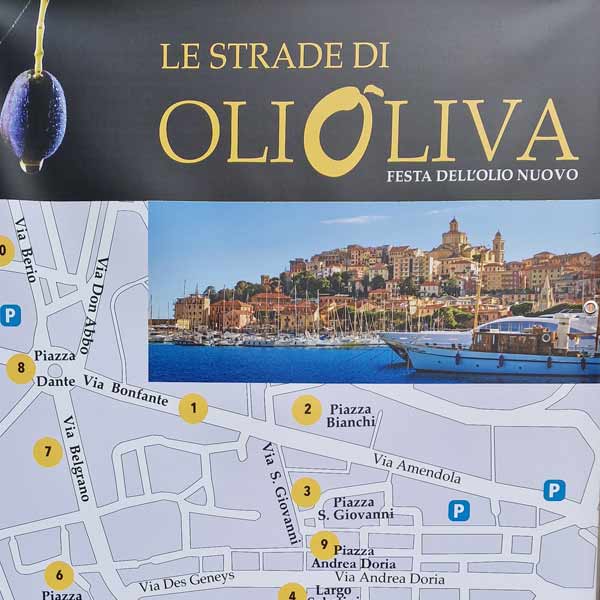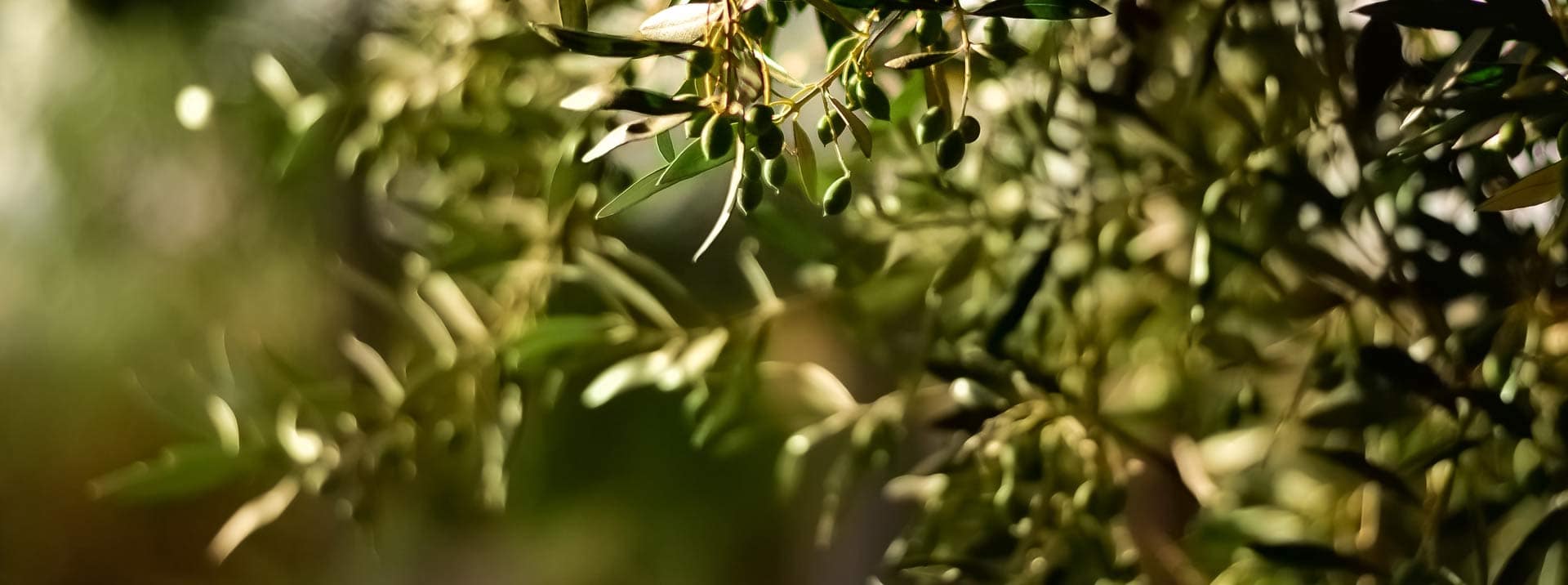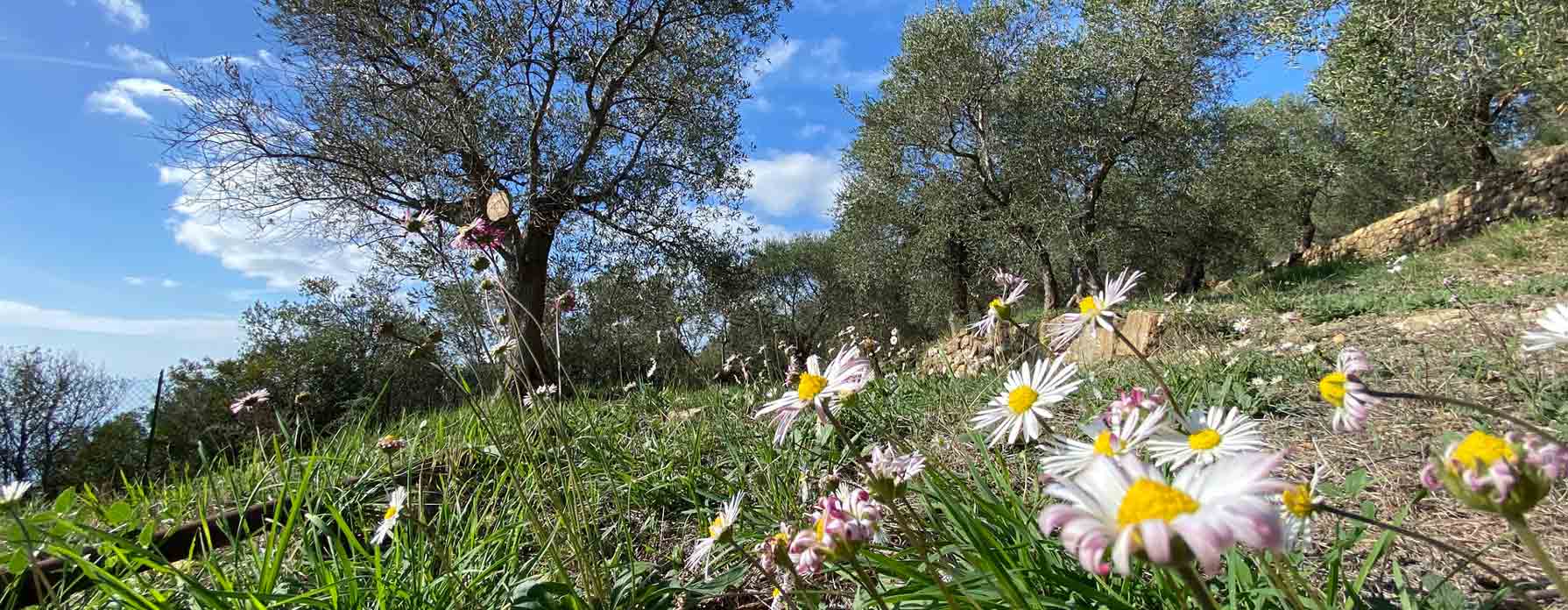Want to visit your olive tree?
Want to visit your olive tree? We look forward to seeing you!
Visit an olive tree: You have your own olive tree, right by the sea in Italy – a wonderful feeling, isn’t it? And best of all, you are also contributing to a project that promotes sustainability and climate protection. If you would like to visit your tree, we look forward to welcoming you. We will then take plenty of time to show you around our farm and explain everything you need to know about your olive tree and our project.
However, there is something to bear in mind: Our farms are not easily accessible. So it would be a shame if you came by spontaneously and then stood in front of closed gates without being able to see your tree.
To ensure that everything runs smoothly, please let us know a few days in advance if you are planning to come. Giulia, Max, Micol or Kai – we will then organize everything for your visit, open the gates for you and guide you personally to your olive tree. Your visit to us will be a very special experience!
The right journey to the farm
Visit the olive tree at Agriturismo Sassolive
IMPORTANT! Please do not drive into the Strada privata Daffieno! But
to this address (Google Maps knows it):
Strada savoia II Tronco 25, 18100 Imperia IM
You are sure to find the right street if you enter “Torre Alpicella” under “Places of interest” in the navigation system.
This gate is the meeting point. You can park opposite where there is space. We will pick you up here and take you to your tree.
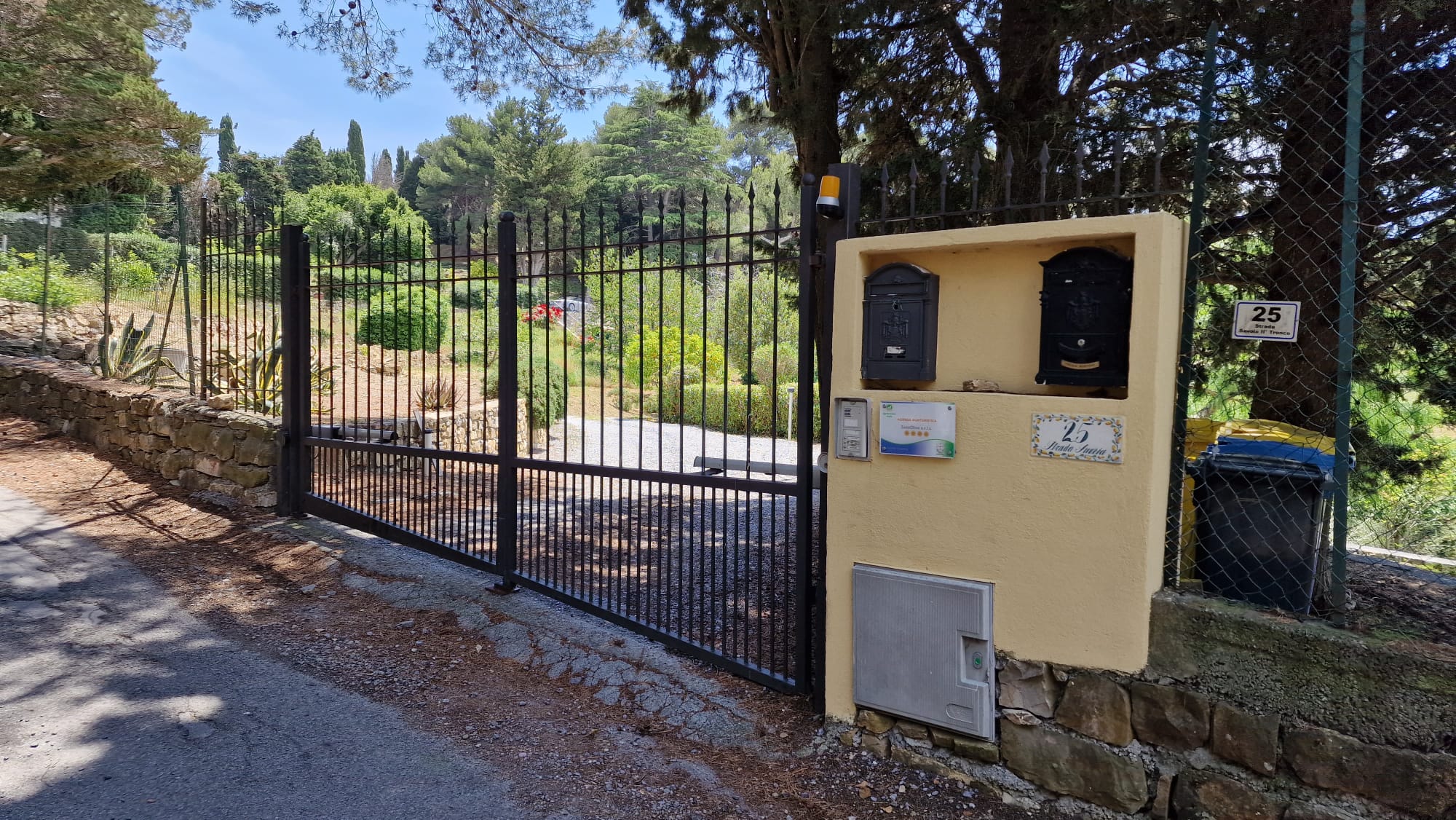

Visit an olive tree near San Martino
You drive to this address (Google Maps knows it):
Via Armanna Superiore 47 – passare da, Via Lorenzo Acquarone, 18100 Imperia IM, Italy
Important: Here you have to turn left from Via Lorenzo Acquarone into this small street and then always follow the signs to “La Quercia”. There are plenty of parking spaces in front of the restaurant.
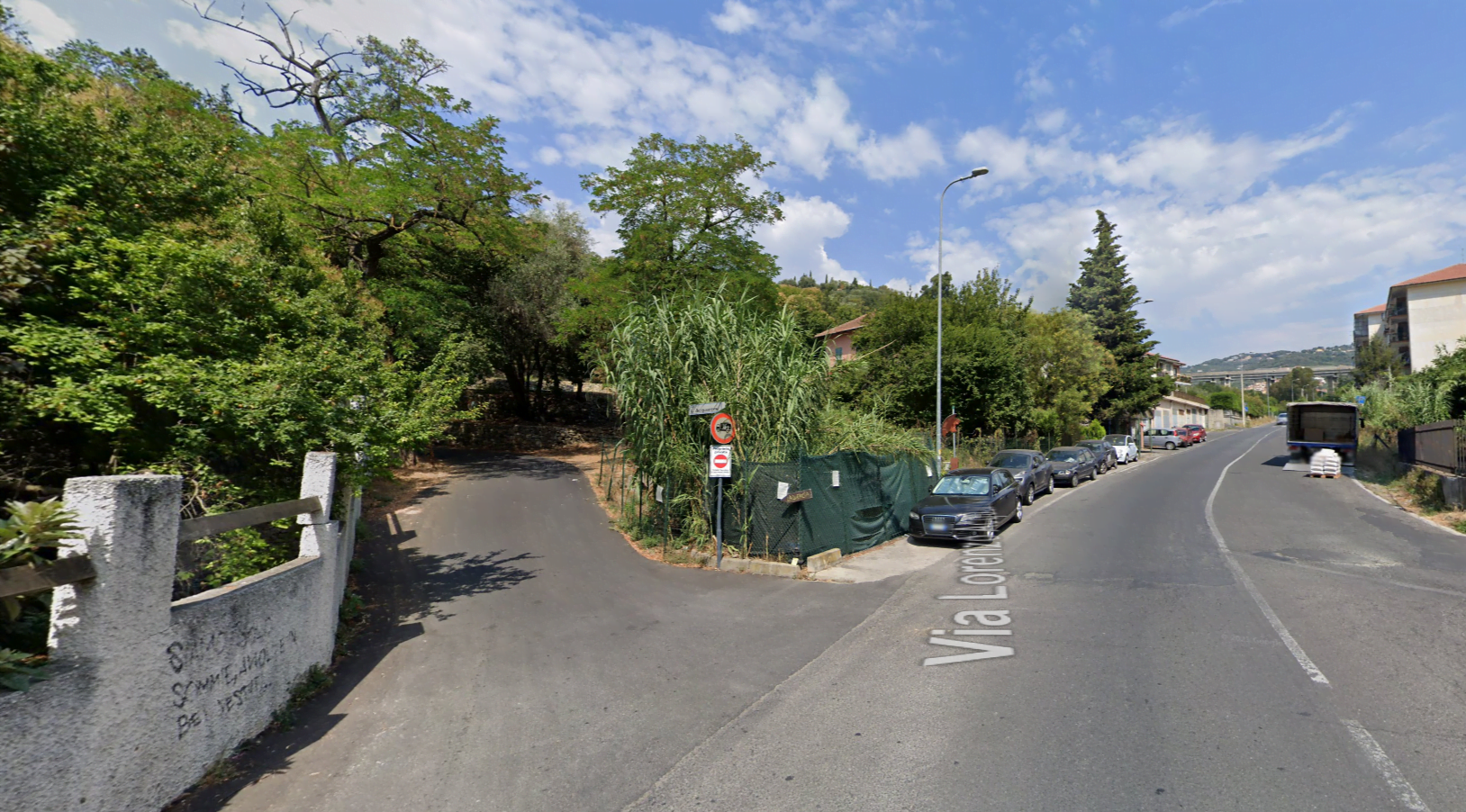
Impressive! All about olive trees
All about olive trees - symbols of vitality and pleasure
All about olive trees: Olive trees are not only an important part of the Mediterranean landscape, but also a symbol of vitality, peace and enjoyment. These amazing trees have a long history and a remarkable ability to adapt to adverse conditions. In this article, we will explore the fascinating world of olive trees and examine their importance in different cultures as well as their economic importance to the global economy.
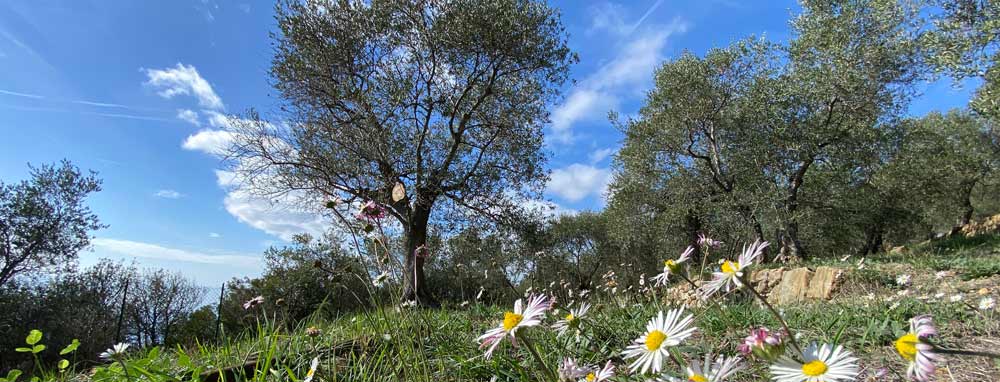
The history of olive trees in different cultures, religions and myths
The olive tree (Olea europaea) is one of the oldest and most versatile cultivated plants in the world and has a rich history spanning thousands of years and different cultures, religions and myths. This article is dedicated to the fascinating history of olive trees in various contexts.
The origins of the olive tree
The origin of the olive tree can be traced back to ancient times and its cultivation is historically deeply rooted in the regions of the Mediterranean, particularly in Greece and the Middle East. The olive was cultivated in the eastern Mediterranean more than 6,000 years ago. The oldest known olive tree remains were found in Santorini, Greece, and are around 3,500 years old.
The importance in antiquity
In ancient times, olives were of great importance for the food supply and economy of the regions in which they were cultivated. The olive fruit was not only used as food, but also to produce olive oil, which was used in the kitchen as well as for ritual and healing purposes. Olive branches were a symbol of peace and were often depicted as a sign of prosperity and abundance.
The role of the olive in Greek mythology
The olive also played an important role in Greek mythology. Legend has it that Athena, the goddess of wisdom, and Poseidon, the god of the sea, fought over the rule of the city of Athens. As a gift to the inhabitants of the city, Athena thrust her spear into the ground, and from this spear grew an olive tree. The inhabitants of Athens chose Athena as their patron goddess, and the olive tree became a symbol of the city and its civilization.
The significance in Roman culture
The importance of the olive also extended to the Roman Empire. The Romans valued olive oil not only as food, but also as fuel for lamps and for skin care. They also used olive branches during the victory procession to symbolize peace and reconciliation.
The olive in religion
The olive also has a strong presence in various world religions. In Christianity, it is a symbol of peace and reconciliation. In the Old Testament of the Bible, there is the story of the dove that brings Noah an olive branch as a sign that the Flood is over and the earth is habitable again.
In Islam, the olive is mentioned several times in the Koran and is considered a sacred fruit. Olive oil has a special significance in Islam and is often used for ritual purification and as food.
The olive tree cultures of the modern age
Over time, the cultivation of olive trees spread beyond the Mediterranean region to other parts of the world, including California, Australia and South Africa. Today, olive oil production has become a global industry and olive trees are grown all over the world.
All about olive trees: the botany
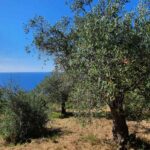
Olive trees (Olea europaea) are one of the oldest and most versatile useful plants in the world. They are known for their olive-shaped fruit, which is processed into olive oil. These trees are not only economically valuable, but also culturally and ecologically significant.
Distribution and origin
The olive tree is native to the Mediterranean region and has spread from there to other parts of the world. The origins of the olive tree can be traced back up to 6,000 years and it is closely linked to the history and culture of the region. Today, olive trees can be found in many countries with a Mediterranean climate, including Spain, Italy, Greece, Portugal, Turkey, North Africa and parts of the Middle East. However, due to its adaptability, the olive tree also grows in other regions of the world, including California, Chile and Australia.
Description of the olive tree
The olive tree is an evergreen deciduous tree that can grow between 5 and 15 meters high, depending on the variety. Its leaves are narrow and silvery-green, which gives them a characteristic color. The flowers of the olive tree are small, inconspicuous and cream-colored. They appear in dense clusters in spring and exude a pleasant fragrance. The fruits of the olive tree are oval, green to black and ripen in the fall. The taste of the olives varies from mild to spicy, depending on the variety and ripening time.
Reproduction
Olive trees are usually propagated by seeds, cuttings or grafts. However, propagation from seed leads to genetic diversity and can contribute to the breeding of new varieties. Propagation by cuttings or grafts is more commonly used in commercial plantations as it ensures that the desired characteristics are retained.
Root systems: deep or shallow rooters?
Olive trees generally have a deep and widely branched root system. The roots can reach a depth of up to 5 meters and spread even further horizontally. This enables the trees to absorb water from deeper layers of soil and thus survive in dry periods. However, these deep roots make olive trees susceptible to root rot in poorly drained soils or when over-watered.
Pollination
Olive trees are generally self-pollinating, which means that they do not need pollinating insects such as bees or wind for pollination. Most olive trees have both male and female flowers on the same plant, which enables self-pollination. Nevertheless, the presence of pollinators can increase yields and improve fruit quality.
Diseases and pests
Although olive trees are robust plants, they are susceptible to some diseases and pests. One of the most feared diseases is olive tree canker, which can lead to discoloration and deformation of the bark and trunks. Other diseases include Olive Quick Decline disease and various fungal infections. Pests such as the Olive Fly can also cause considerable damage to the fruit.
Why olive oil is so healthy
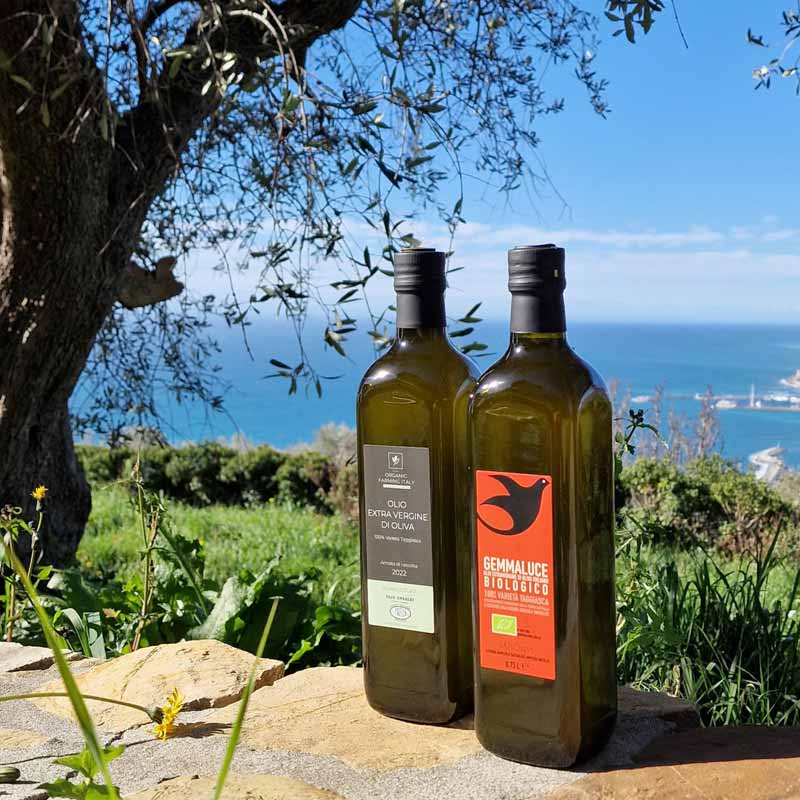
Even in this day and age, when a wide variety of cooking oils are available on the market, olive oil has a special place in our kitchens and hearts. It is not only appreciated for its delicious taste, but also for its numerous health benefits.
Composition of olive oil:
Olive oil is obtained from the fruit of the olive tree (Olea europaea) and is a natural vegetable oil. The composition of olive oil can vary depending on the variety, ripeness of the olives and processing methods, but in general it contains the following main components:
- Fats: Olive oil is rich in healthy unsaturated fatty acids, especially monounsaturated fatty acids such as oleic acid. These fats make up the majority of the oil and are an important part of the Mediterranean diet.
- Antioxidants: Olive oil contains various antioxidants such as vitamin E and phenols, which help to protect the body from oxidative stress and free radicals.
- Phytosterols: These compounds in olive oil can help to lower blood cholesterol levels and protect the cardiovascular system.
- Vitamins: In addition to vitamin E, olive oil may also contain small amounts of vitamin K and vitamin A.
- Minerals: It contains trace elements such as iron and calcium, which contribute to good health.
Health benefits of olive oil:
- Heart health: Regular consumption of olive oil can reduce the risk of cardiovascular disease. The unsaturated fatty acids they contain can lower blood cholesterol levels and reduce inflammation in the body.
- Weight management: Despite its high fat content, olive oil can be part of a healthy diet in moderation. It can increase the feeling of satiety and help to control weight.
- Anti-inflammatory effect: The anti-inflammatory properties of olive oil can help reduce chronic inflammation in the body, which is associated with various diseases, including diabetes, arthritis and cancer.
- Skin health: Olive oil is often used in skin care products as it moisturizes, softens and smoothes the skin and helps protect it from free radical damage.
- Healthy digestion: Olive oil can aid digestion and prevent constipation if consumed in moderation.
- Antioxidant effect: The antioxidants it contains can help to protect cells from premature ageing and strengthen the immune system.
Types of olive oil:
There are different types of olive oil, which vary according to processing and quality:
- Extra virgin olive oil: This is the highest quality grade and is obtained from fresh olives by mechanical means. It has the highest content of healthy ingredients and the best taste.
- First pressing olive oil: This oil also comes from mechanical pressing, but has a slightly lower content of healthy compounds than extra virgin olive oil.
- Pure olive oil: This oil is blended from refined and virgin olive oil and is less healthy as it loses some of its healthy ingredients during the refining process.
- Light olive oil: This oil is highly refined and has a mild flavor. It contains only a few healthy compounds and is often suitable for frying.
Tips for consuming olive oil:
- Use extra virgin olive oil for salads and for drizzling over dishes.
- Store olive oil in a cool, dark place to preserve its quality.
- Use olive oil as a substitute for saturated fats such as butter or margarine.
- Pay attention to the portion size, as olive oil is high in calories.
Overall, olive oil can be a valuable addition to a healthy diet. It offers a wide range of health benefits and has a delicious flavor that enriches many dishes. However, remember to enjoy it in moderation and opt for high-quality varieties such as extra virgin olive oil to get the maximum health benefits.
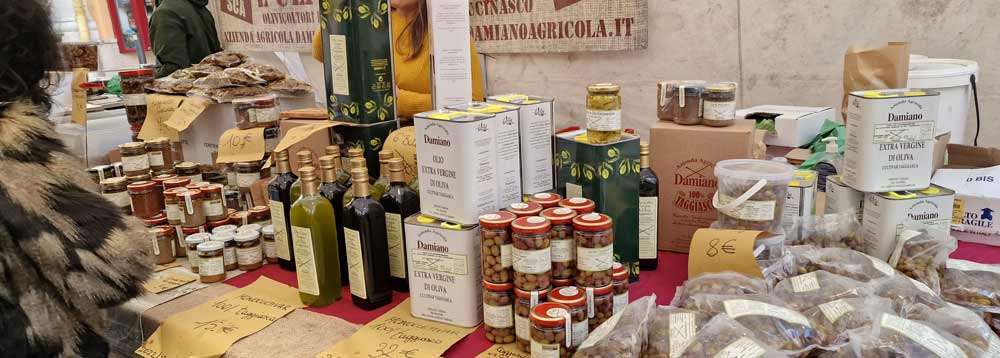
The most important olive varieties
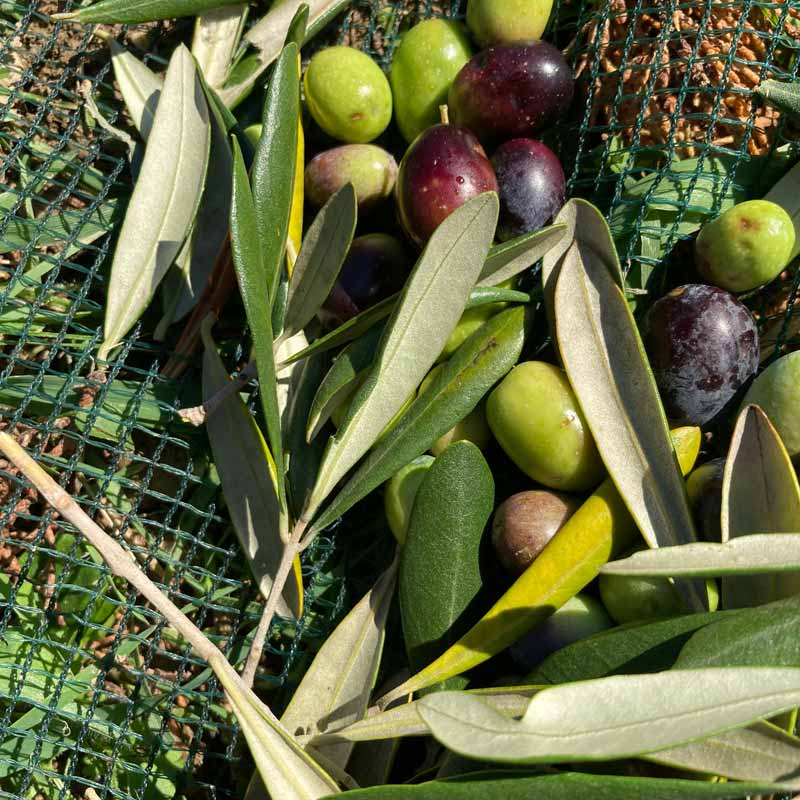
Here are the best known olive varieties from different countries together with short descriptions:
- Verdial: Verdial olives are widespread in Spain and have an oval shape. They have a mild and slightly bitter taste.
- Empeltre: These Spanish olives are round and have a smooth skin. They are known for their mild taste and delicate texture.
- Taggiasca: Taggiasca olives are small, dark olives from Italy. They have a mild, slightly nutty flavor.
- Frantoio: This Italian olive variety is often used to produce high-quality olive oil. They have a fruity and slightly spicy taste.
- Koroneiki: Koroneiki olives come from Greece and are small, round and have an intense, fruity flavor.
- Carrasquenia: Carrasquenia olives are native to Spain and have an elongated shape. They have a mild and slightly bitter taste.
- Picual: Picual olives are one of the best-known olive varieties from Spain and have an intense flavor with a slight bitter note.
- Picudo: These Spanish olives are medium-sized and have a slightly oval shape. They have a mild and slightly sweet taste.
- Leccino: Leccino olives are widespread in Italy and have an oval shape. They have a mild and slightly fruity taste.
- Moraiolo: Moraiolo olives are another Italian variety and are often used to produce high-quality olive oil. They have an intense, fruity flavor.
- Kalamata: Kalamata olives are dark purple to black and come from Greece. They are known for their rich, spicy flavor.
- Galega: Galega olives are native to Portugal and have an oval shape. They have a mild and slightly spicy taste.
- Redondil: Redondil olives are native to Spain and have a round shape. They have a mild and slightly sweet taste.
- Hojiblanca: Hojiblanca olives are widespread in Spain and have an oval shape. They have a mild and slightly spicy taste.
- Bosana: Bosana olives come from Italy and are medium-sized with a slightly oval shape. They are mild and have a pleasant texture.
- Dritta: These Italian olives are round and have a smooth skin. They have a mild and slightly fruity taste.
- Athilonia: Athilonia olives come from Greece and have an oval shape. They have a mild and slightly spicy taste.
- Tsounatis: Tsounatis olives are native to Greece and have an elongated shape. They have a mild and slightly sweet taste.
- Arbequina: Arbequina olives are small and round, originally from Spain. They have a mild, sweet taste and are often used to produce oil.
- Cobrancosa: Cobrancosa olives are native to Portugal and have an oval shape. They are mild and have a slightly spicy note.
- Verdeal: Verdeal olives are widespread in Portugal and have an oval shape. They have a mild and slightly spicy taste.
- Cornicabra: Cornicabra olives come from Spain and have an elongated shape. They have a mild and slightly spicy taste.
- Coratina: Coratina olives are native to Italy and are often used to produce high-quality olive oil. They have an intense, fruity flavor.
- Ogliarola: Ogliarola olives are widespread in Italy and have an oval shape. They have a mild and slightly fruity taste.
- Mastoidis: Mastoidis olives come from Greece and have an oval shape. They have a mild and slightly spicy taste.
- Nocellara: Nocellara olives are native to Italy and have an oval shape. They have a mild and slightly sweet taste.
- Biancolila: Biancolila olives come from Italy and have an oval shape. They have a mild and slightly fruity taste.
- Chalkidiki: Halkidiki olives are widespread in Greece and have an elongated shape. They have a mild and slightly sweet taste.
- Mavronia: Mavronia olives come from Greece and have an oval shape. They have a mild and slightly spicy taste.
- Lechin: Lechin olives are native to Spain and have an oval shape. They have a mild and slightly spicy taste.
- Cerasuola: Cerasuola olives are widespread in Italy and have an oval shape. They have a mild and slightly fruity taste.
- Carolea: Carolea olives come from Italy and have an oval shape. They have a mild and slightly sweet taste.
- Koloves: Koloves olives are native to Greece and have an oval shape. They have a mild and slightly spicy taste.
- Adramitiani: Adramitiani olives come from Greece and have an oval shape. They have a mild and slightly sweet taste.
- Picholine: Picholine olives are native to France and have an elongated shape. They have a mild and slightly spicy taste.
- Glandou: Glandou olives come from France and have an oval shape. They have a mild and slightly sweet taste.
- Saloneque: Saloneque olives are widespread in France and have an oval shape. They have a mild and slightly spicy taste.
- Grossane: Grossane olives come from France and have an oval shape. They have a mild and slightly sweet taste.
- Tandié: Tandié olives are native to France and have an oval shape. They have a mild and slightly spicy taste.
- Houzia: Houzia olives come from Morocco and have an elongated shape. They have a mild and slightly sweet taste.
- Menara: Menara olives are widespread in Morocco and have an oval shape. They have a mild and slightly spicy taste.
- Meslala: Meslala olives come from Morocco and have an oval shape. They have a mild and slightly sweet taste.
- Picholinemarrocaine: These Moroccan olives have an elongated shape and a mild, slightly spicy flavor.
- Zitoun: Zitoun olives are widespread in Tunisia and have an oval shape. They have a mild and slightly sweet taste.
- Chemlali: Chemlali olives come from Tunisia and have an oval shape. They have a mild and slightly spicy taste.
- Chetoui: Chetoui olives are native to Tunisia and have an oval shape. They have a mild and slightly sweet taste.
- Ouslati: Ouslati olives come from Tunisia and have an oval shape. They have a mild and slightly spicy taste.
- Zalmati: Zalmati olives are widespread in Tunisia and have an oval shape. They have a mild and slightly sweet taste.
- Ayvalik: Ayvalik olives come from Turkey and have an oval shape. They have a mild and slightly spicy taste.
- Edremit: Edremit olives are widespread in Turkey and have an oval shape. They have a mild and slightly sweet taste.
- Girit: Girit olives come from Turkey and have an oval shape. They have a mild and slightly spicy taste.
- Domat: Domat olives are native to Turkey and have an oval shape. They have a mild and slightly sweet taste.
- Kiraz: Kiraz olives come from Turkey and have an oval shape. They have a mild and slightly spicy taste.
- Uslu: Uslu olives are widespread in Turkey and have an oval shape. They have a mild and slightly sweet taste.
- Gemlik: Gemlik olives come from Turkey and have an oval shape. They have a mild and slightly spicy taste.
- Celebi: Celebi olives are native to Turkey and have an oval shape. They have a mild and slightly sweet taste.
- Memecika: Memecika olives come from Turkey and have an oval shape. They have a mild and slightly spicy taste.
Please note that there are many more varieties of olives, but this list contains some of the best known from different countries.
The economic importance of olive trees
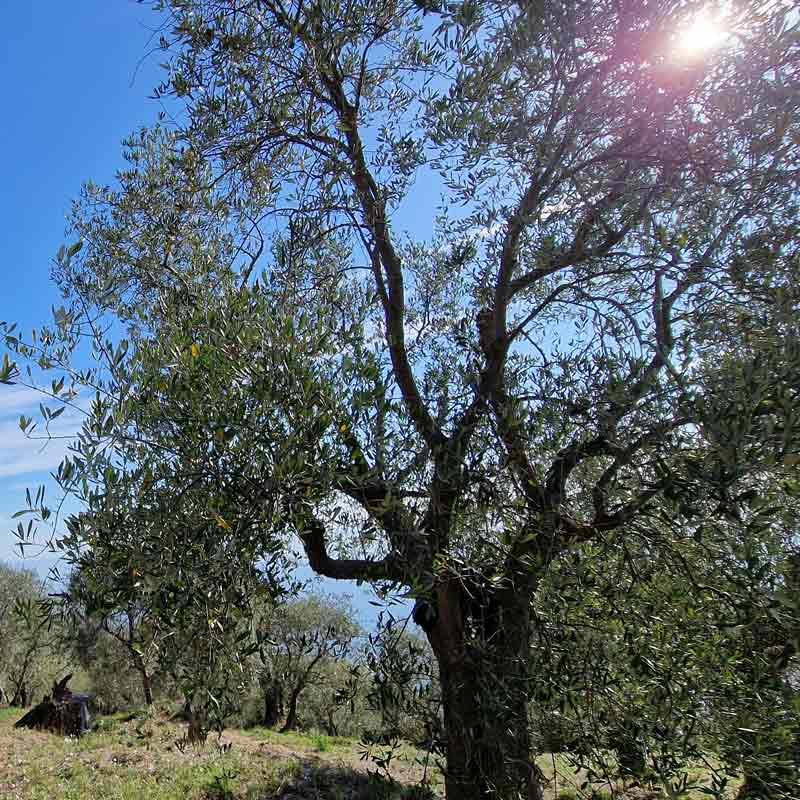
Olive trees are not only a symbol of peace and health, but also have considerable economic significance. In the following, we will take an in-depth look at the economic relevance of olive trees and the various aspects that contribute to this.
The olive harvest and olive oil production
One of the most obvious economic importance of olive trees lies in the olive harvest and the production of olive oil. Olive oil is a versatile product that is widely used in Mediterranean cuisine and is also in high demand internationally. Olive oil production provides jobs for thousands of people, from harvesting the fruit to processing it in oil mills. The olive oil industry is an important economic sector, particularly in countries such as Spain, Italy, Greece and Turkey.
Exporting olive oil to other countries can generate considerable income for these nations and help to strengthen their economies. High-quality, extra virgin olive oil is a sought-after product that is used in upmarket restaurants and in the food industry. The demand for healthy and natural foods has further increased the appreciation of olive oil, which has a positive effect on the economic importance of olive trees.
Olive products and processing
In addition to olive oil, there are many other products made from olives that are also economically relevant. These include pickled olives, olive pastes, olive oil soaps and olive wood products. The processing of olives into these products creates jobs in various sectors, from food processing companies to the craft industry. In rural areas in particular, where olive trees are common, these branches of production play a crucial role in the local economy.
The ecological value of olive trees
Olive trees not only contribute to economic development, but also have considerable ecological value. They are adapted to dry, arid environments and can help prevent erosion and improve soil quality. Their roots hold the soil together and protect it from wind and water erosion. Olive trees also provide a habitat and food for a variety of animal species.
Tourism and agritourism
The cultivation of olive trees can also boost the tourism sector in the growing regions. Tourists often head to the picturesque olive groves to experience the harvest season or take part in agritourism activities such as olive oil pressing or the production of olive products. This tourism can contribute to the diversification of income sources in rural areas and create additional economic opportunities.
Sustainable cultivation
The demand for sustainable and environmentally friendly products is growing worldwide, and olive growing can score points in this respect. Many olive growers rely on organic cultivation and avoid the use of pesticides and chemicals. This sustainable cultivation system can not only protect the environment, but also meet market demand and achieve higher prices for the products.
The challenges for olive trees
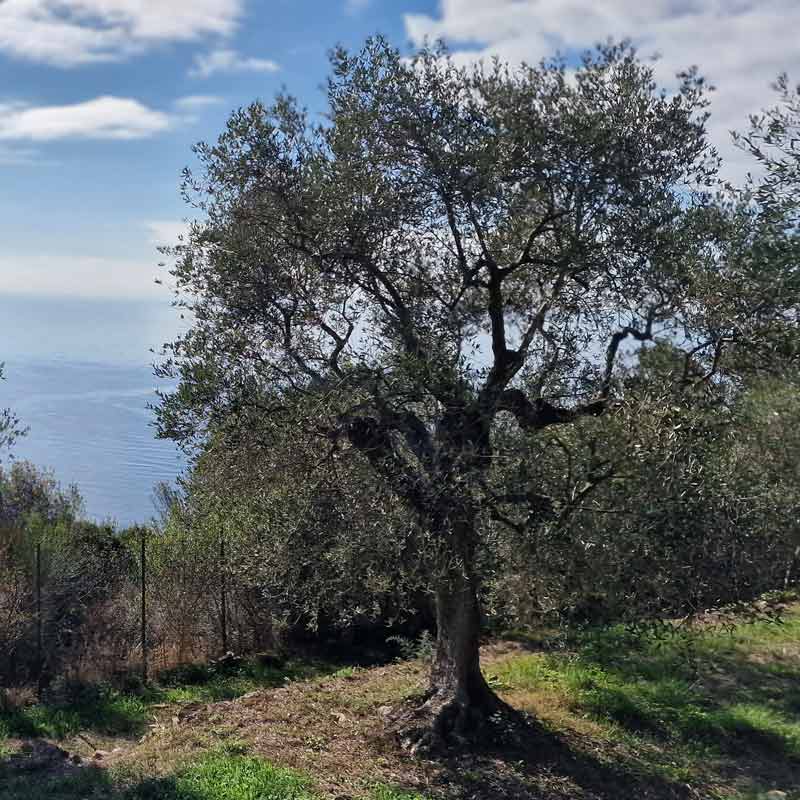
The olive tree industry faces a number of challenges that can affect the health and productivity of olive trees. Here are some of the most important challenges:
- Climate change: Climate change has led to changes in weather conditions that can have a negative impact on olive trees. These include droughts, heat waves and unpredictable rainfall, which affect water resources and jeopardize olive production.
- Plant diseases and pests: Olive trees are susceptible to various diseases such as Olive Quick Decline Syndrome (OQDS) and the Xylella bacterial complex, which can severely damage the trees. Pests such as the Olive Fruit Fly can also cause considerable crop losses.
- Agricultural practices: Traditional agricultural practices can lead to soil erosion, pollution and excessive use of pesticides, which increase the environmental impact and jeopardize the sustainability of olive tree plantations.
- Competition and market volatility: The olive oil industry is facing increasing competition on the global market, which can lead to price fluctuations. Smaller olive growers have difficulties competing with the large producers.
- Water scarcity: Water scarcity is a serious problem in some olive-growing regions. Irrigating olive trees requires large quantities of water, and in dry regions this can lead to conflicts and jeopardize the sustainability of production.
- Sustainable agriculture: Switching to sustainable agricultural practices is a challenge for the olive tree industry. It requires investment in more ecological cultivation methods and the reduction of the ecological footprint.
Overcoming these challenges requires close collaboration between farmers, scientists, governments and the industry to find sustainable solutions that can protect the health of olive trees and maintain the quality and quantity of olive production. This can include the development of resistant varieties, the use of more environmentally friendly cultivation methods and the promotion of fairer trade and sustainable agriculture.
Olive Oil Sommelier Seminar with Dieter Oberg
Exclusive Olive Oil Sommelier Seminar with Dieter Oberg
Olive Oil Sommelier Seminar: the German speaking “guru” in olive oil, Dieter Oberg has agreed, due to our friendly connection, to offer an exclusive olive oil seminar for the members of the Organic Farming Italy Community. A unique opportunity for all those interested in olive oil. After the seminar you will be able to evaluate the quality of olive oil, you will be able to understand what is written on the labels and you will have tasted and tested yourself what flavors there can be in olive oil.
Contents of the olive oil seminar
In the one-day seminar you will learn everything you need to know about olive oil and you will learn the sensory testing of olive oil according to the DOP standard. It is composed in blocks of general information, background knowledge and practical practice of testing different olive oils from all over Europe.
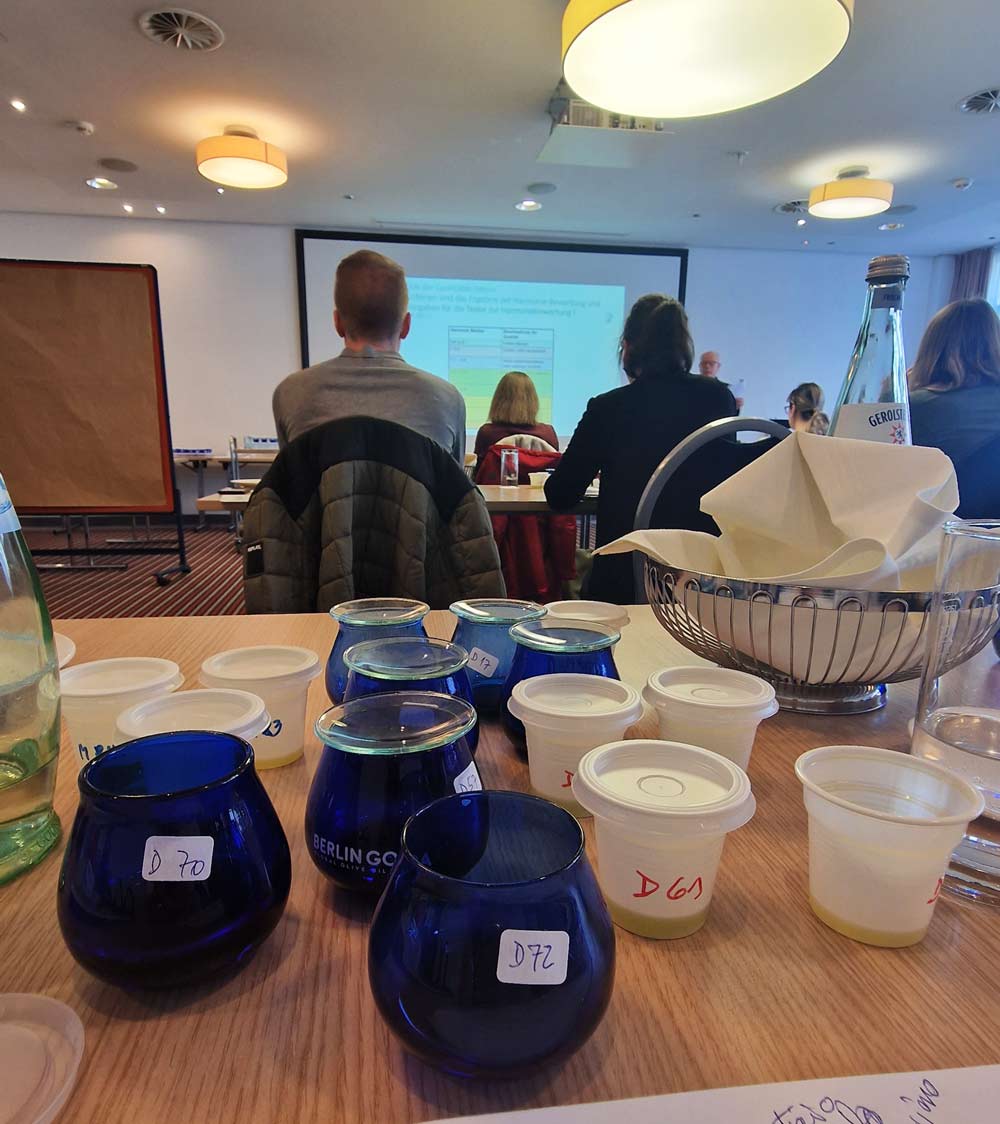
- Olive varieties, cultivation, production in Europe
- Agronomic practice (traditional and superintensive) and the impact on qualities.
- The fruit, duck time, harvesting methods
- Harvest time, storage, pressing
- What factors influence the flavors?
- Prevention of oxidation (peroxide value, UV absorption, pyropheophytins)
- Rules sensory test according to IOC
- Test Method Explanation and Application
- Learning: qualification of sensory impressions
- Perception/assessment method
- Apply classification criteria
- Joint testing and evaluation of tens of fresh oils from all over Europe
- Presentation of the certificates of participation
Price: depending on number of participants between 200,- and 300,- €
Place: Germany, location depending on feedback
Time: January/February
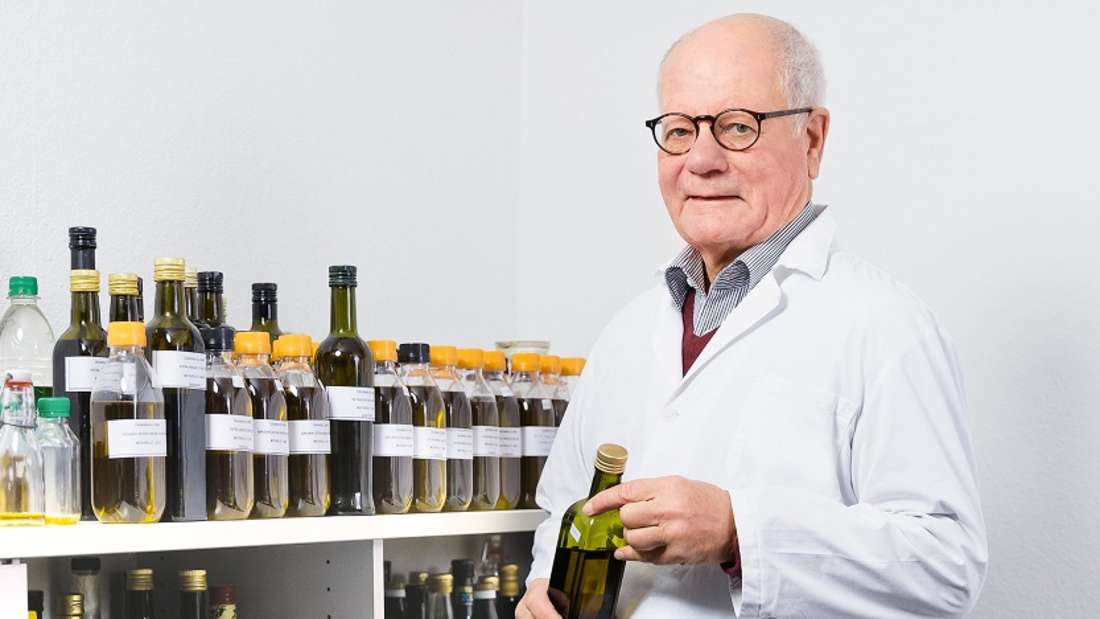
Dieter Oberg
has headed the Informationsgemeinschaft Olivenöl for 35 years, founded and headed the German Olive Oil Panel (DOP) for 17 years, which developed the current valid sensory test standards in Europe. He advises the European Union, Stiftung Warentest, many institutes and olive oil producers in Europe. And he is a juror in tens of recognized olive oil test panels such as the “GOOL – global Olive Oil Award”. There is no one more competent in Germany when it comes to olive oil.
Due to our long-standing relationship, Dieter Oberg has agreed to conduct a closed olive oil sensory seminar for our Community & Friends. However, this requires a minimum participation of 15 participants. Therefore, we ask you to tell us in advance if you would be generally interested in an olive oil seminar. When enough do this, we start to plan concretely.
Please let us know if you are generally interested in an olive oil seminar with Dieter Oberg. Depending on the number of interested parties, we start with the concrete planning.
Olive Tree Sponsorships 2023 Ticker
Olive Tree Adoptions 2022: 2022 season updates (adoptions from 11/19/2021 to 9/5/2022).
February 02, 2024: Delivery of the labels
Today we visited Luca from Olio Calvi down in the village. These are the people who bottle your olive oil and ship it to the countries. The new labels have been delivered to him so that we can finally start production.
The release of the labels by the BioAGRICert office was delayed by approx. 2 weeks. But now we’re ready to go. Luca will start in the middle of next week and send the entire shipment to Germany at the end of next week. The shipper is already waiting there to send the individual parcels to the sponsors.
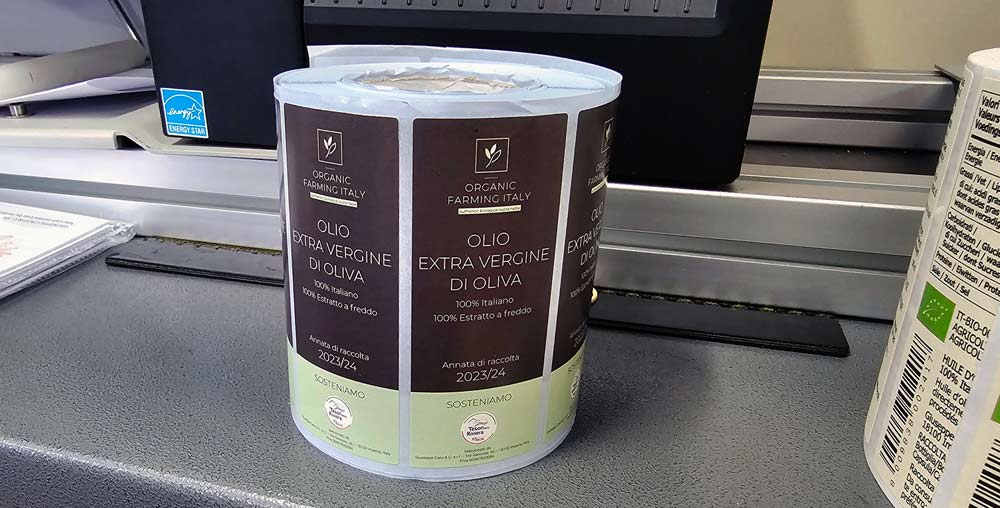
January 24, 2024: Release of labels and printing
The labels have now been approved by BioAgriCert and are at the printers. They need approx. 6 days. The labels are then delivered to Olio Calvi. The olive oil is bottled and labeled there. Estimated dispatch date to sponsors: 2nd week in February.
January 12, 2024: Printing of the labels
Daniele, the graphic designer at GRAFICHE AMADEO, provided the missing logos and designed the new labels. Now she has to have Luca released. Then we can fill and label the bottles.
Everything is already prepared at the shipping service provider in Munich-Garching. The shipping boxes have been delivered and the team is waiting for the olive oil to be delivered.
December 06, 2023: Timing dispatch
The olive oil is ready at Luca’s. He is still waiting for the delivery date for the glass bottles. There have been bottlenecks here for years. This year too, although one might think that there should be an abundance of bottles due to the poor harvests.
But he expects the bottles to arrive soon.
At the same time, we start producing the new labels. Each label must be approved by the Italian Chamber of Commerce, which always takes some time.
Olivo Calvi can then fill the olive oil into bottles and label the bottles.
As today is already St. Nicholas Day, we assume that Olio Calvi will deliver our olive oil at the beginning of January.
He then sends it on to Germany and other countries by freight forwarder, where shipping service providers are waiting to pack the individual parcels.
We therefore assume that the olive oil will be with the sponsors in mid to late January.
November 28, 2023: We calculate the quantities of oil
Luca has made us a concrete offer. The blend olive oil, bottles for filling, bottling, labeling. That sounds good. Now we can calculate how much olive oil we can send to the sponsors. This calculation looks something like this:
Yield sponsorship less:
– Sponsorship costs (wooden signs, material, mounting, videos, etc.)
– Running costs of the farm, which are incurred even without yield per tree
– Support Tesori della riviera
– Purchase olive oil
– Print labels
– Labeling
– Packaging
– Shipping to Germany and other European countries
– Fullfillment (individual packaging for godfathers, cartons, handling)
– Postage for single shipment
From the remaining amount, we can now calculate how much each sponsor can receive.
November 20, 2023: Luca Calvi offers a solution
Luca from Olivo Calvi offers a solution for us. He has a very good blend of olive oil for us. We drive down to his place to try it out. It’s very good! Green, mandorle, green artichoke, apple and not bitter. He can sell us the oil at an acceptable price.
November 07, 2023: First reactions from farmers
The first farmers from the neighborhood respond to our inquiry. But so far we’ve only gotten rejections. Either they haven’t had enough olives themselves, or they are asking a price of over 20 euros per liter. Then there would be the bottling and labeling. So it doesn’t work.
October 23, 2023: Broadcast call to our known organic farms in the neighborhood
As we have virtually no olive oil this year, but want to send you, the godparents of the olive trees, olive oil in any case, we have decided to buy olive oil from farmer friends. That’s why we’ve started a circular call.
Result: As the harvest is often still in progress and the yield is often very poor, nobody wants to commit to selling olive oil and at what price.
October 18, 2023: End of harvest
We finished the harvest again after only 5 days. There were no olives on about 80% of the trees. Thus, the harvest this year is 112 liters, instead of 2,000 liters in a good year.
October 12, 2023: Harvest start
Due to the infestation of the olive trees with the olive fruit fly, we must now quickly start harvesting. Due to the surprise cool and damp nights, we have a heavy infestation of olive fruit fly. It pierces the olives and lays its eggs in the olive. Thus, the olive is dead, turns black and falls off.
6 facts about pruning the perfect olive tree
Pruning olive tree: experience, knowledge and a lot of love for the trees
The picturesque farm Sassolive grows over 1,200 organically grown olive trees. These trees need careful and competent care to reach their full potential and deliver the expected harvest. In particularly productive years, this careful management can result in the production of up to 2,000 liters of premium organic olive oil.
The maintenance cycle of these olive trees follows a fixed annual schedule:
- Pruning olive tree in January and February: this step is essential to ensure the optimal structure of the tree and prepare it for the coming year of growth.
- Fertilizing in March and April: Targeted fertilization ensures that the tree receives all the necessary nutrients to grow vigorously and bear abundant fruit.
- Protection in summer: in the hot months it is important to protect the tree from extreme conditions and pests.
- Harvest from October 1: This is the culmination of a year of hard work, carefully harvesting the ripe olives.
A crucial factor for the success of the season is the rain, especially in December and January. Olive trees form their inflorescences during this time. A lack of water at this crucial stage can result in fewer flowers forming and significantly affect crop yields for the year.
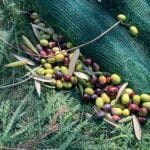
While olive trees generally require less water than many other tree species, they are not immune to extreme drought. As was observed in 2022, prolonged drought can cause the trees to shed their olives as they do not have enough resources to fully develop the fruit.
Pruning olive trees for agricultural purposes is quite different from ornamental pruning. It requires a deeper understanding and greater experience. The primary goal is to maximize fruit production and ensure consistent olive quality. Ideally, an olive tree for agricultural purposes should not exceed 3 to 4 meters in height. This greatly facilitates the harvest.
In situations where olive trees grow too high (up to 6 meters), radical pruning can be carried out when pruning olive trees. This drastic step leaves almost only the main stem with a few shoots. After such a radical measure, the trees sprout again within a few weeks. From these new shoots carefully select 3 to 4, which then grow into bearing branches.
In summary, the care of olive trees at Sassolive Farm requires both knowledge and dedication, and the result of this hard work every year is a first class organic olive oil.
Pruning olive trees is both an art and a science and plays a critical role in the health, productivity and longevity of the trees. This process requires knowledge, experience and care to ensure that the trees can thrive optimally. In this article, we will highlight the different aspects of olive tree pruning, including best practices, different techniques, and when to prune.
1: Why is pruning olive trees important?
1.1 Promoting growth: Removing dead or diseased wood rejuvenates the tree, resulting in stronger growth and improved fruit production.
1.2 Improve ventilation and light exposure: a well pruned tree has a more open structure that allows better air circulation and light exposure, which in turn improves the health of the tree and the quality of the fruit.
1.3 Facilitate harvesting: Trees with a clear structure are easier to harvest, which increases efficiency and reduces labor costs.
2: Best practices for pruning olive trees
2.1 The right equipment: Make sure you use sharp and clean cutting tools to ensure clean cuts and minimize the risk of infection.
2.2 The right time: Pruning should ideally be done at the end of winter or early spring, when the tree is still dormant but about to start new growth.
2.3 Proper pruning: Be careful not to remove too much of the tree at once, as this can stress the tree and affect fruit production. Experts recommend pruning no more than 25-30% of the tree per year.
3: Different pruning techniques for olive trees
3.1 Thinning: This technique involves removing entire branches or twigs to open up the structure of the tree and allow light and air into the interior of the tree.
3.2 Pruning: This method involves shortening the branches to control growth and promote a denser, bushier shape.
3.3 Rejuvenation: This technique is used on older trees to encourage new growth and increase productivity.
4: Common mistakes when pruning olive trees
4.1 Prune too much at once: Pruning too much can damage the tree and shorten its life.
4.2 Incorrect pruning: Poor pruning techniques can leave wounds on the tree that are susceptible to disease and pests.
4.3 Neglecting tree age: Younger trees and older trees require different pruning techniques and approaches.
5: Formative pruning leads to a perfect crown
The aim of training pruning for olive trees is to promote a healthy crown structure that supports the long-term and vital growth of the trees. The aim is also to shape the tree crown through targeted pruning so that it has a compact structure and meets aesthetic requirements.
In the practice of olive growing, which is less important outside Mediterranean climate zones, such as north of the Alps, training pruning is primarily used to increase yields. An exemplary photo from the Lake Garda region shows that the crowns have been trimmed in such a way that the interior is exposed. This promotes the penetration of sunlight into the canopy and thus increases the plant’s photosynthetic capacity, which in turn has a positive effect on productivity.
The following measures are implemented during training pruning:
- Shaping the outer crown structure
- Correction and optimization of the inner crown abutment
- Establishment of a hierarchy between main and secondary branches
- Removal of non-load-bearing branches
Due to the complexity of training pruning, it is advisable to develop a detailed pruning plan in advance. Taking and analyzing photos of the tree canopy can provide valuable support. The planned pruning measures can be visually prepared and specified on printed images.
6: The maintenance pruning of olive trees
Maintenance pruning is an important maintenance measure aimed at correcting minor defects and damage to plants in order to promote and maintain their health. During such pruning, all dead plant parts such as leaves, twigs and, in more serious cases, entire branches are removed. This makes a significant contribution to keeping the olive trees healthy by ridding them of harmful areas.
In situations where an olive tree has lost significant parts of its crown, it may also be appropriate to prune it back to the healthy wood. However, successful resprouting after such pruning depends on robust vegetation. It is therefore crucial to ensure optimum care after pruning.
A vitality test, which checks whether the vascular channels under the bark are still alive and green, can provide information on whether a branch or twig is still alive or already dead. Further information on appropriate care after pruning is explained below.
Slide the slider to the right and left
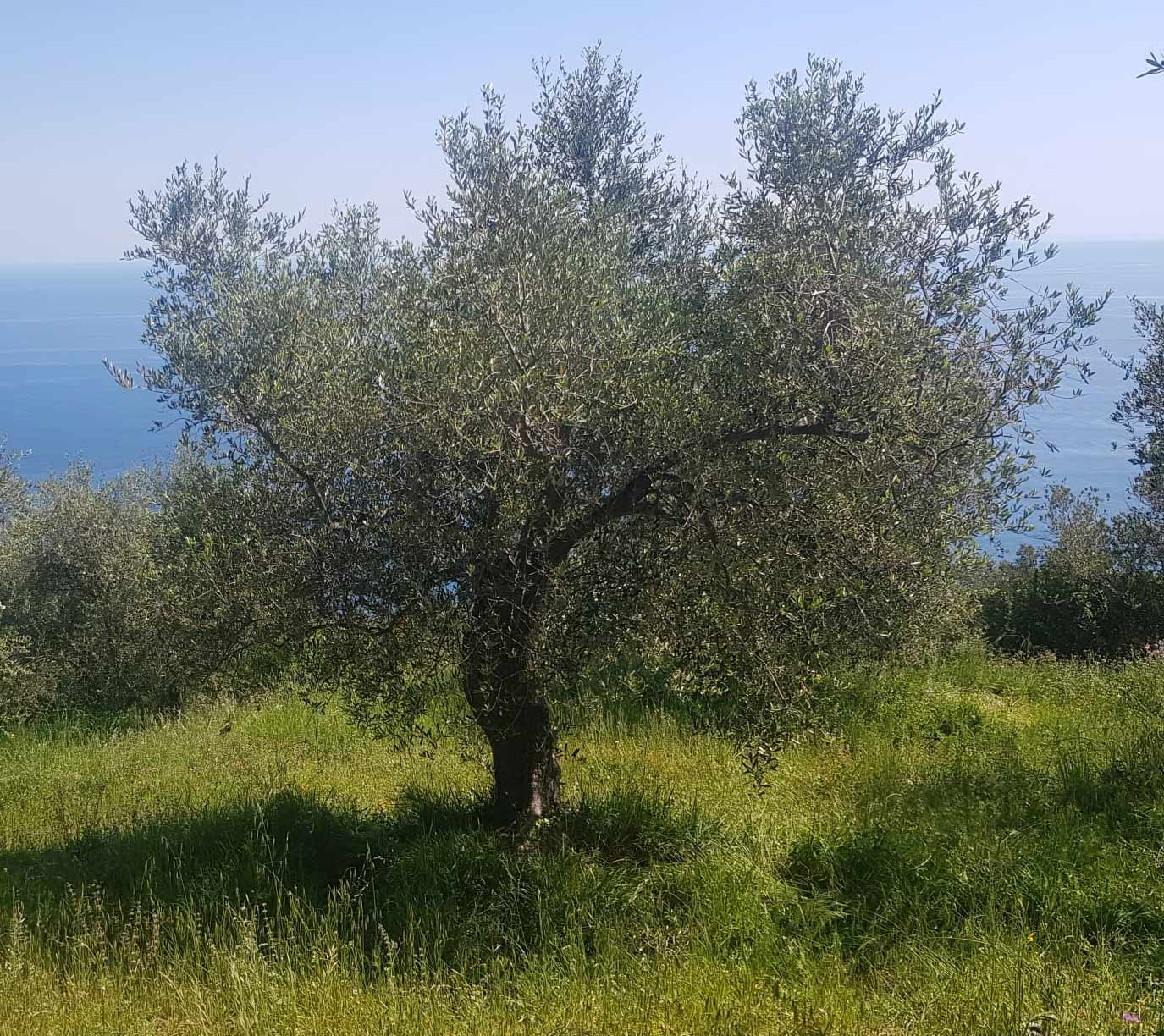
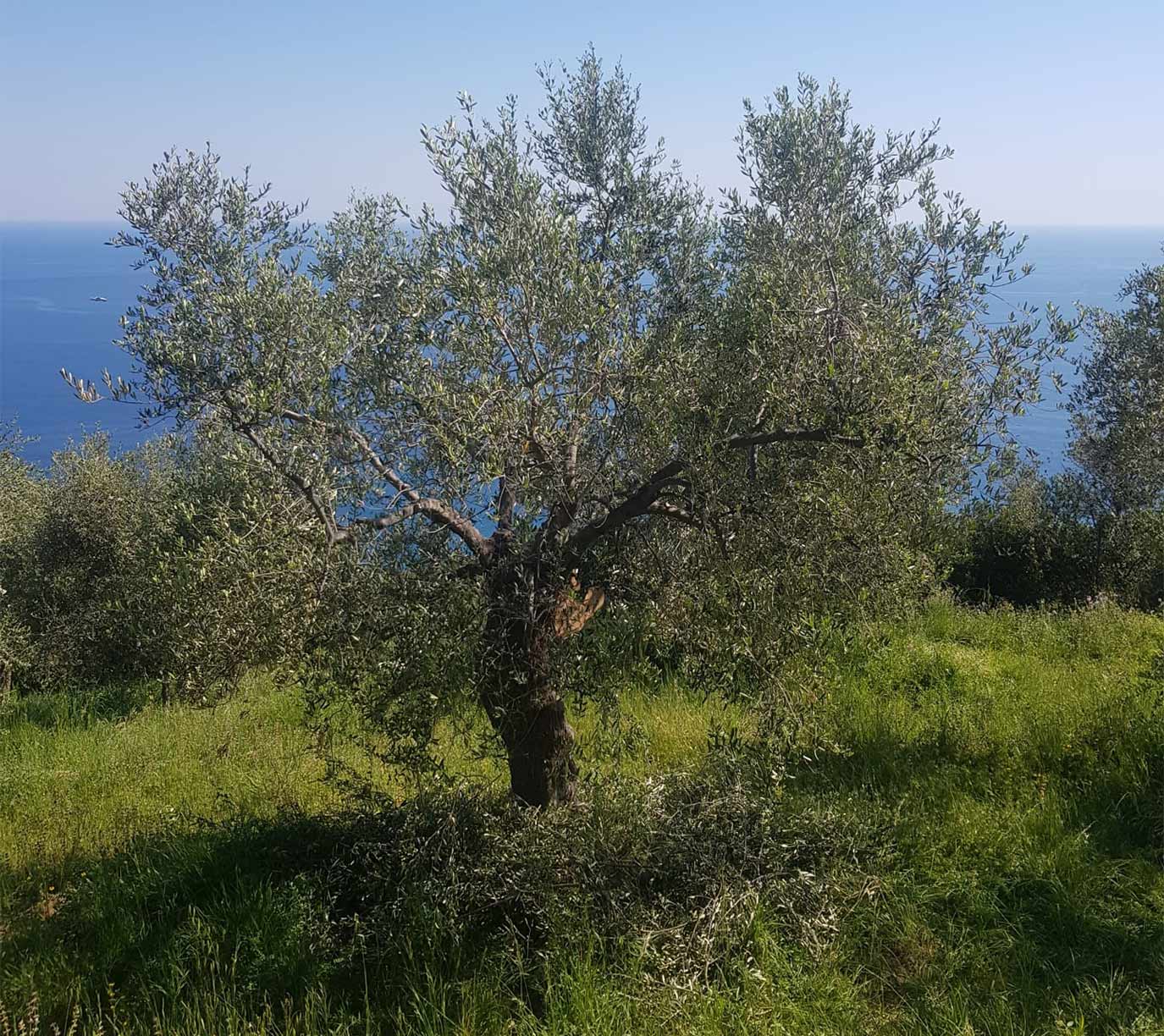
Pruning olive tree – a matter of light
An olive tree is not only a symbol of peace and longevity, but also a fascinating example of nature that can bear fruit for decades if properly cared for. Once an olive tree has reached its ideal shape, the main task is to ensure a translucent crown and promote a steady new growth. Interestingly, olive trees only produce fruit on shoots that grew the previous year. It is therefore essential to remove the older shoots, which bear less fruit, and any dead wood every year. Similarly, the branches that obstruct the supply of light to the lower branches should be shortened.
For us as organic farmers, the care of our olive trees is a special challenge. Unlike conventional methods, we use only natural products and do not use any chemicals. This requires additional effort, but we are proud of our sustainable approach. Pruning our olive trees is more than just a routine job for us – it’s a passion. We also offer the possibility of sponsorship with one of our trees so that you can feel personally connected with the growth and well-being of the tree.
How an olive tree sponsorship works
Explanation olive tree sponsorship - how it works
Olive tree sponsorship explanation: discover how olive tree sponsorship works at Organic Farming Italy and secure your own organic olive tree. This is a unique opportunity not only to obtain high quality olive oil, but also to contribute to the promotion of sustainable agriculture in Italy.
This is how an olive tree sponsorship works: You become the sponsor of an olive tree and regularly receive olive oil directly from your tree. This is more than just shopping at the supermarket – it’s a personal relationship with your tree that you can visit and nurture at any time. Sponsorship extends for the entire duration of your support, and during that time we lovingly care for your tree, from maintenance to harvest. You are welcome to help and experience the process first hand if you like.
By adopting a tree, you are directly contributing to the support of small farms in Italy. The olive tree sponsorships provide them with an additional source of income and enable them to sell their organic olives at fair prices. This promotes the transition from conventional to organic farming and contributes to a steady increase in the area of organic land.
Also important to explain olive tree sponsorship: On our farms we only cultivate olive trees of the Taggiasca variety, a famous olive with a long tradition and excellent quality. These olives were introduced hundreds of years ago by monks in Taggia and are known for their premium organic olive oil. Discover the difference and become part of our community committed to sustainable agriculture and premium organic products. [MEHR ERFAHREN >]
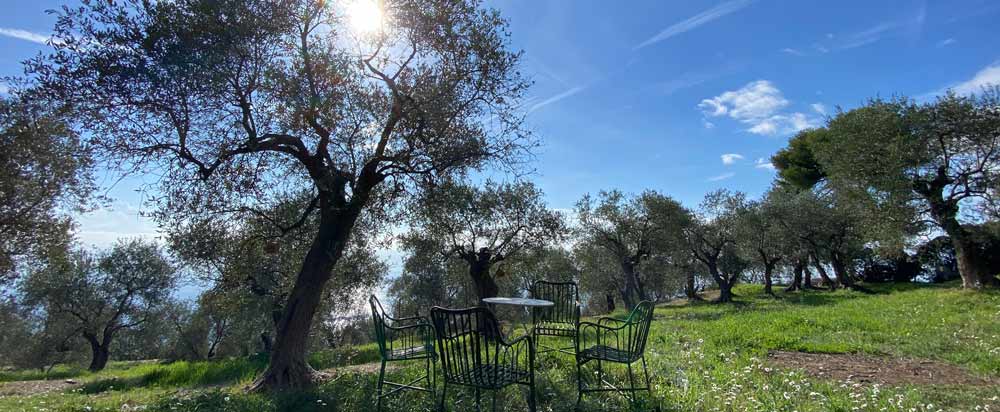
Explanation olive tree sponsorship: This is the procedure using the example of the farm Sassolive:
1. making the wooden signs for the olive tree sponsorship
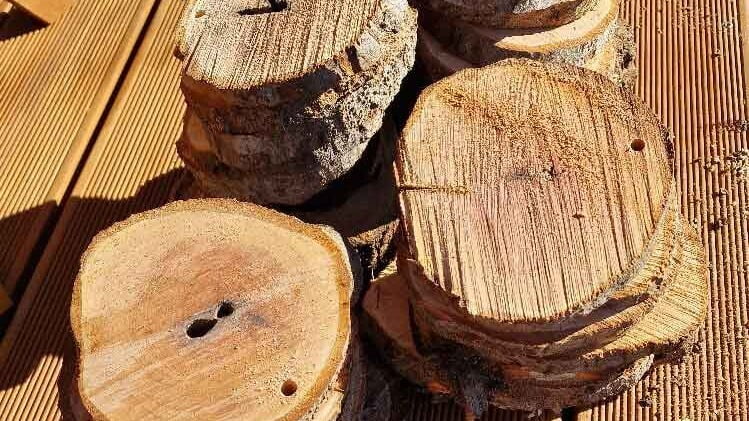
As soon as we have received your order and payment for the organic olive tree sponsorship, Max will get started immediately. He selects a first-class piece of wood on our premises and saws a panel from it. He then takes the piece of wood to Giulia.
Giulia refines the wooden surface by carefully sanding it and applies the name of your choice to the sign. She drills holes for the fastening and treats the sign with an ecological wood preservative. This treatment preserves the inscription of the sign from smudging due to weather conditions.
2. search olive tree and attach sign
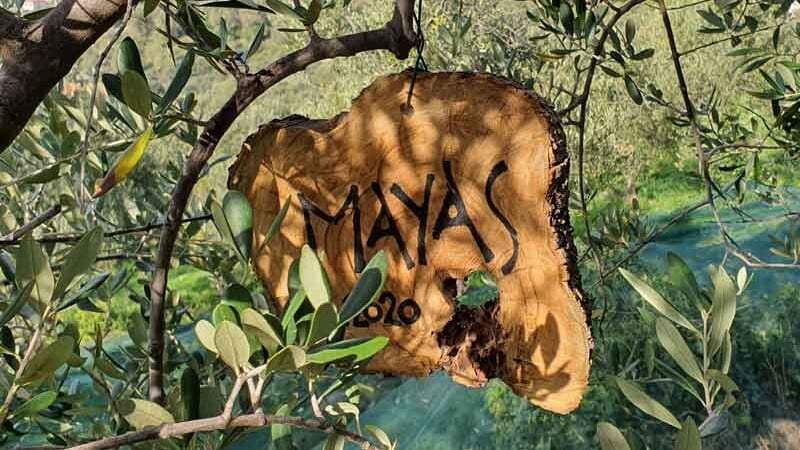
Next, Giulia will select a beautiful tree that matches your order size. To this tree she attaches the sign. She then films the tree and photographs both it and the sign. Depending on your wish, she will put this footage either in a Dropbox folder or in a WhatsApp group created especially for you.
Furthermore, she marks the exact location of the tree in Google Maps and shares the link in the said group. Depending on the weather conditions – in case of inclement weather we cannot install the signs – this process takes approximately 5 business days.
3. the preparation of the certificates for the olive tree sponsorship.
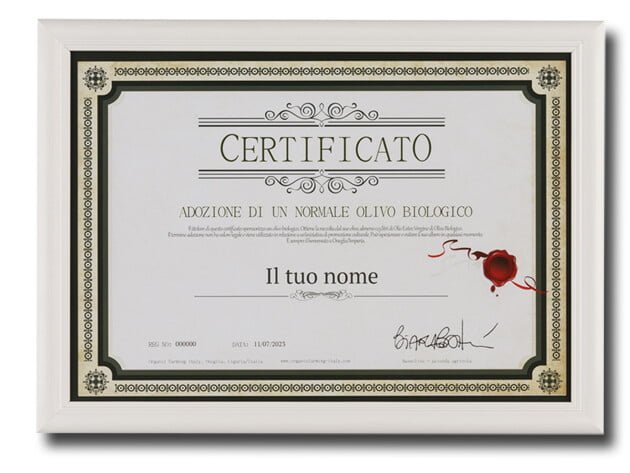
At the same time with the signs we prepare your personal certificate. Your chosen name and date will be carefully inserted and converted into a PDF.
Then we upload this PDF either to the Dropbox folder or to the WhatsApp group. Thanks to the high resolution of the PDF, you can be sure that the certificate will appear in first-class print quality, should it be printed. Delivery takes place within about 2 working days. Important for the explanation olive tree sponsorship.
4. photos and video of your organic olive tree
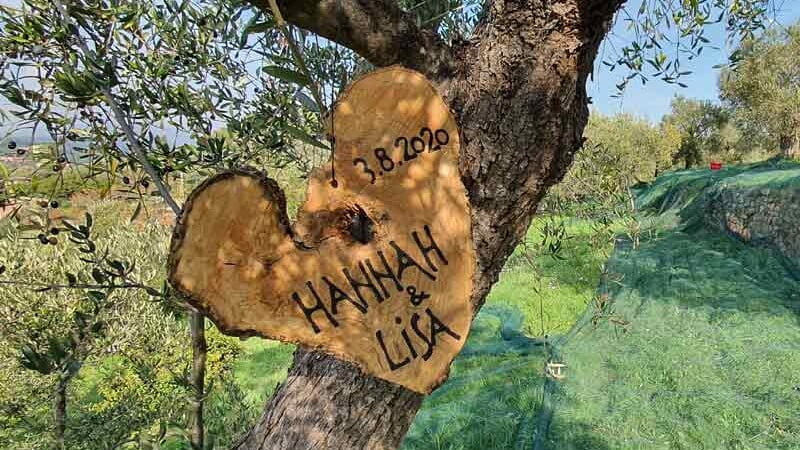
Every time you adopt an organic olive tree, you gain exclusive access to visual insights and detailed location information about your tree. We record the development of your tree with photos, videos and precise Google Maps positioning so that you can follow the growth process of your tree closely at all times.
You have two convenient options for sending this material: Either we set up a personal Dropbox folder for you, to which only you have access, or we set up a WhatsApp group specifically for your sponsorship, where we share all updates and information. The WhatsApp group offers the additional advantage that we can send you news and updates about your tree more quickly and directly – whether it is starting to flower, is due for pruning or similar events.
5. the gift package, optional with each adoption
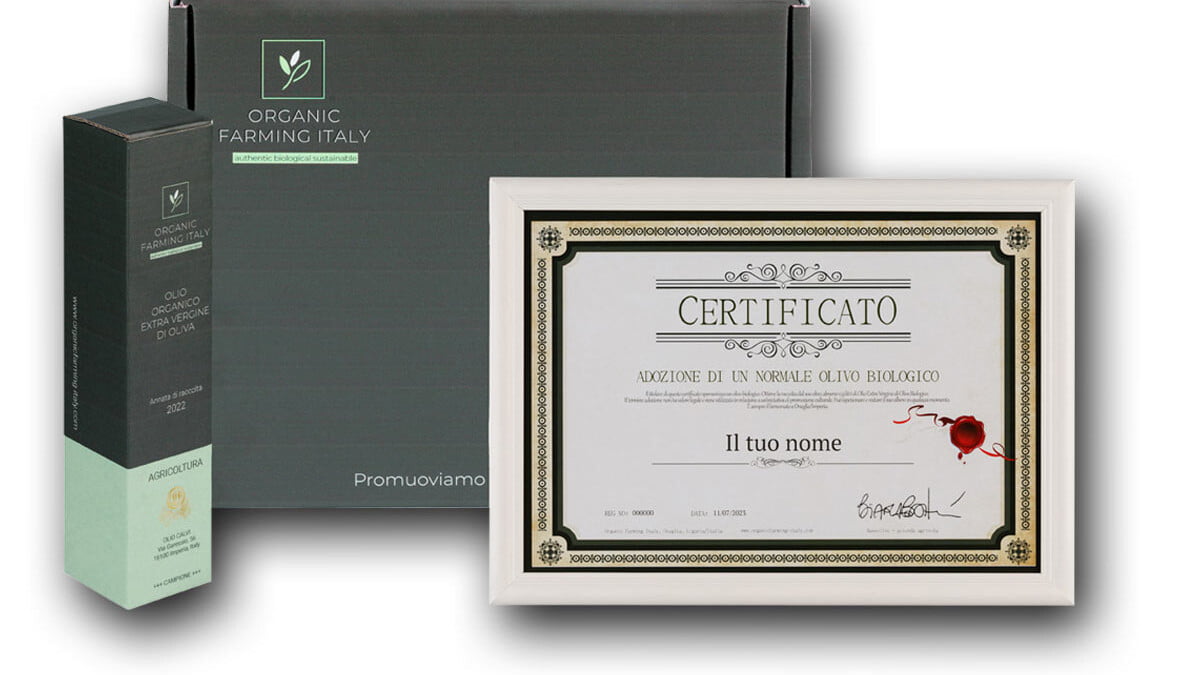
Every organic olive tree sponsorship can be upgraded with an additional gift set. We have noticed that this type of sponsorship often serves as a loving gift for friends or family members, especially for weddings or birthdays. To make it easier for you to choose a gift, you can simply add our gift set to your order.
The process of adopting an olive tree remains completely unchanged. As a special extra, however, you will receive an exclusive package delivered directly to your home. This contains a high-quality certificate, elegantly printed on sturdy paper and presented in a beautiful white wooden frame, as well as a small bottle of the finest organic olive oil directly from our farm. This gives you a tangible and meaningful gift that you can give or send personally to the recipient. Delivery is prompt and reliable and takes around 3-8 working days.
6. the delivery of the premium organic extra virgin olive oil.
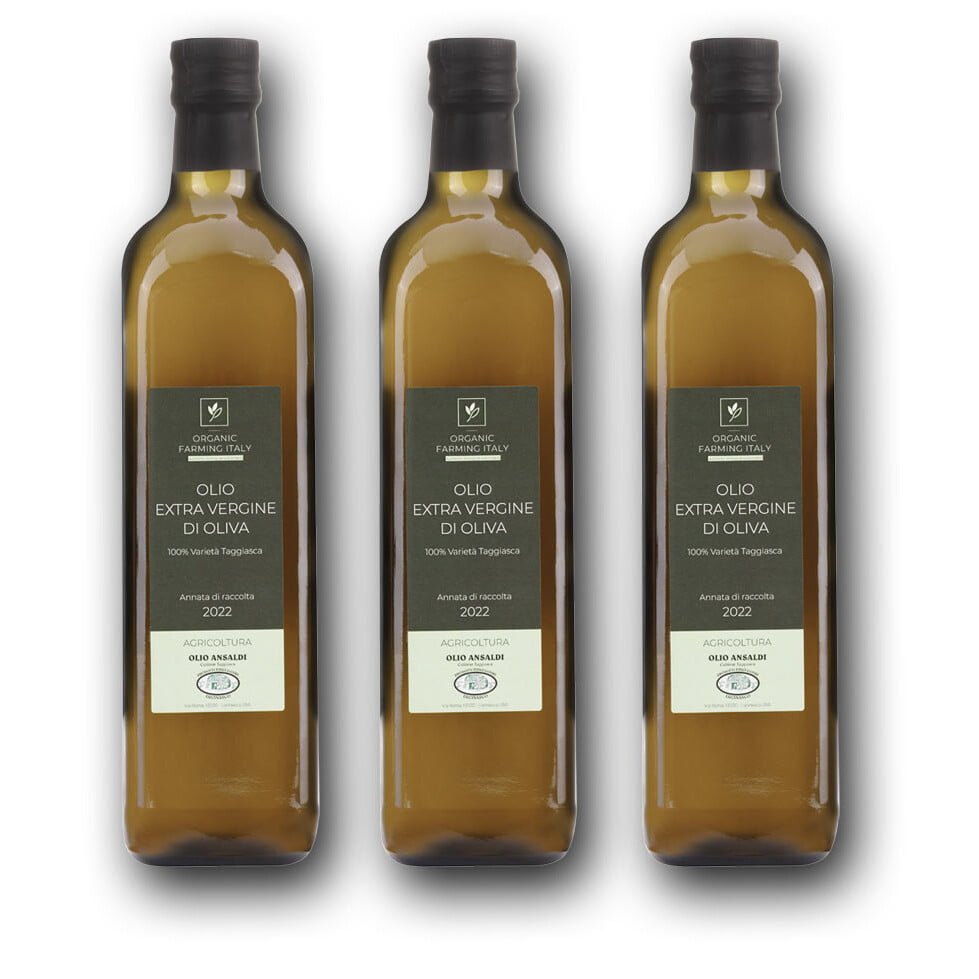
Depending on the size of the tree, the fruit from your Taggiasca olive tree will yield between one and six bottles of first-class organic extra virgin olive oil. Harvest time starts in October every year and can extend into November or December, depending on the climatic conditions.
Every day we press the freshly harvested olives cold and gently, in collaboration with a local manufacturer that specializes exclusively in organic olives. The precious oil is then stored in tanks and remains there until December before we carefully bottle it and ship it to you.
As a sponsorship holder, you can look forward to guaranteed delivery of this exquisite Organic extra virgin olive oil directly to your front door – or a Address of your choice – As soon as the harvest is complete and we know exactly what to expect, how much oil your tree has produced this seasonyou get the exclusive opportunity, additional olive oil from your tree to a at a reduced price and thus increase your stocks.
7. visit your organic olive tree
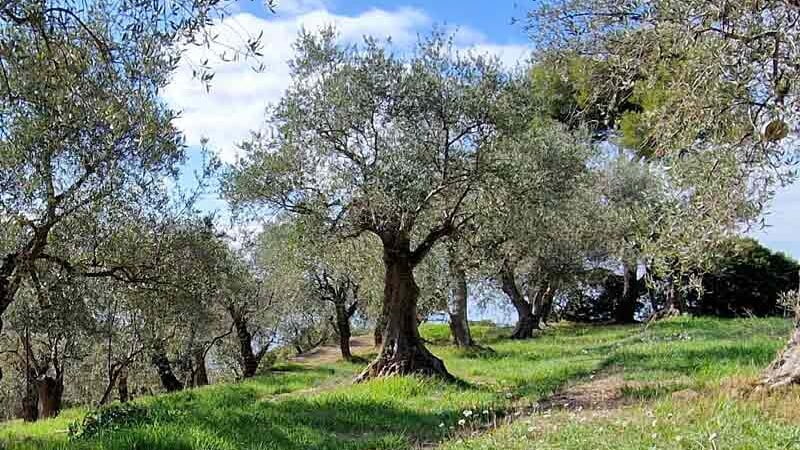
Our charming farm, Sassolive, is not located in Spain or on the island of Crete, but is easily accessible by car. For example, you can reach us from Munich in just 7 hours. The charming little Italian town of Imperia, where our farm is located, is situated in a region protected by the state. This means that tourism plays only a minor role here and authentic Italian life can still be enjoyed to the full, as it should be.
Our farm itself is situated on a hill by the sea – more precisely in Alpicella – between Imperia and Diano Marina. Here with us, you can enjoy peace and space to the full. You are welcome to visit us and your tree whenever you like. Comfortable accommodation is available for your stay. You can get a first impression of our idyllic spot here. HERE >>
9. find your tree on google maps
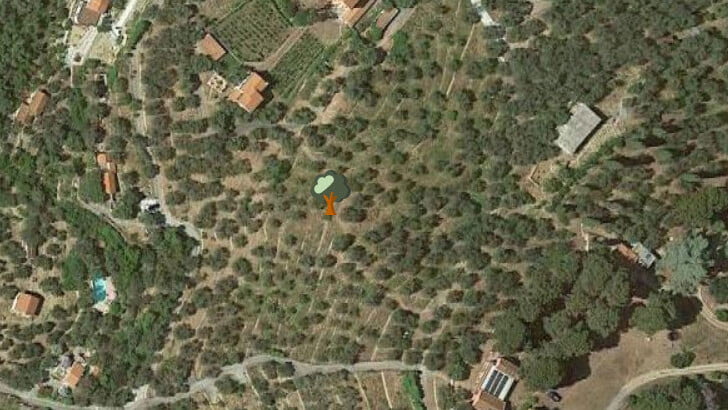
Every single tree on our farm is lovingly marked on a Google Map. We are not the only ones to benefit from this clear presentation – you too can immerse yourself in this map and discover your very own personal olive tree from the sponsorship! Simply visit the website, type your order number into the search field and the exact location of your tree will be revealed. It’s like finding a little treasure on a map! 🌳📍
9. support for organic farmers in Liguria
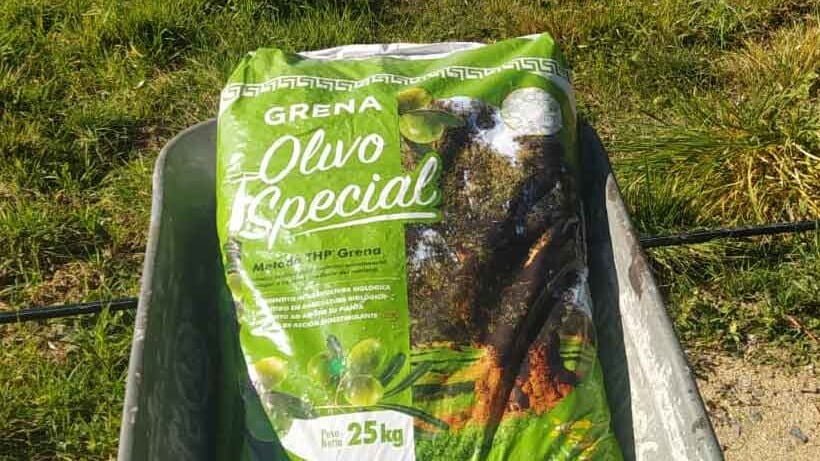
Passionate organic olive growers in Italy are facing challenging times: In the last two years, many of them have suffered considerable crop losses. While last year’s harvest was already only around 20% of a normal yield, this year’s summer drought has exacerbated the situation.
But in times like these, solidarity also grows! The newly established organization “Rete Tesori della Riviera ” is committed to helping our organic farmers. And best of all: “Organic Farming Italy ” is also playing its part! With every tree adoption you complete, a small part of your contribution goes directly to this organization’s relief fund.
In this way, you support not just one tree, but a whole community of committed farmers. 🌿❤️
10. extension of the sponsorships
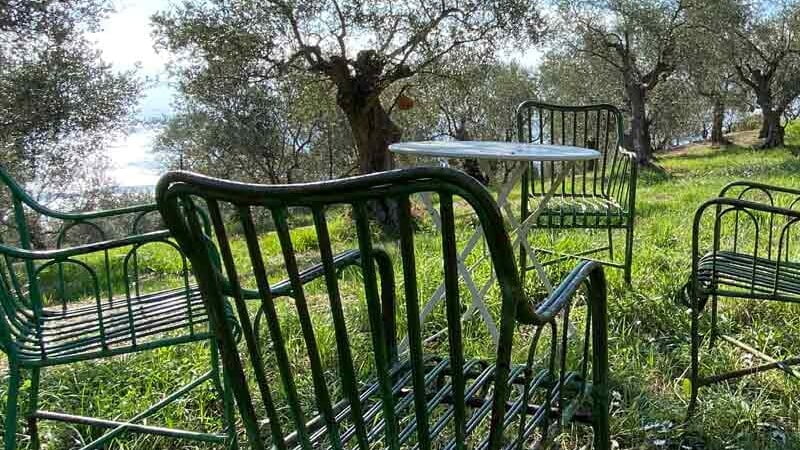
The classic organic olive tree sponsorship with us runs for a period of one year and is not automatically renewed. About 30 days before your sponsorship is due to expire, we will contact you to give you the opportunity to continue your green commitment.
You can then decide whether you want to renew your sponsorship for another year or opt for a flexible subscription, which you can easily cancel at any time.
This way, your organic olive tree always remains a part of your life, without you running the risk of forgetting to extend it. 🌳💚
11. delivery of the olive oil

The explanation olive tree sponsorship also includes: with your decision for a sponsorship you enter the community of the Organic Farming organic community, an experience that goes far beyond the simple purchase of products such as on Amazon or in the supermarket.
As a sponsor, you don’t just buy olive oil; you enter into a one-year relationship with an olive tree and become part of its agricultural journey. The yield of the harvest is the direct result of this period of natural growth and care.
With a bountiful harvest, your tree will provide you with plenty of olive oil. In less favorable conditions, the yield is correspondingly lower. If the harvest fails completely, we will do everything we can to compensate for this loss. We strive to source high-quality olive oil from our immediate neighborhood and deliver it to you.
While this may not be the amount you expected, it shows our commitment and desire to be there for our community.
We hope that this explanation of olive tree sponsorship has helped you to better understand how we work and how sponsoring an organic olive tree with us works. If you have any questions, please contact us.
Taggiasca Olive - everything you need to know
Taggiasca Olive - everything you need to know
Taggiasca Olive – A comprehensive insight: On the global stage of olives, the Taggiasca olive occupies a prominent position. Farmers in Liguria praise it as the most outstanding and delicious olive the world has ever tasted. However, olive producers in Sicily, Crete, Spain and Provence share this opinion when it comes to their own harvests. Therefore, it is time to lift the veil and dive deeper into the world of the famous Taggiasca olive.
The Taggiasca olive, a fruit rooted in the hills of Liguria, enjoys an excellent reputation that extends far beyond its Italian borders. But what exactly makes this little olive so special? Here we take a close look at the Taggiasca olive to understand why it is considered by many to be the culinary queen.

Size, shape and colour of Taggiasca Olive
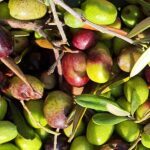 The Taggiasca olive is characterized by its modest dimensions, its size being usually between 1.5 cm and 2.5 cm. Her characteristic elongated profile becomes slightly fuller at the base, with supple and flawless skin.
The Taggiasca olive is characterized by its modest dimensions, its size being usually between 1.5 cm and 2.5 cm. Her characteristic elongated profile becomes slightly fuller at the base, with supple and flawless skin.
The flesh of this olive is remarkably firm and maintains its consistency over time. A standout characteristic of the Taggiasca olive is its diverse color palette. Even within a single tree, one can observe a kaleidoscope of colors, from a delicate light green to various shades of brown to striking purples and violets.
Another distinguishing feature of this olive is its intense aroma, which is favored by its limited size and lower water content compared to other olive varieties. Depending on the climatic conditions, this flavor is further intensified as the olive absorbs less liquid.
The centuries-old history of an olive variety
Already at the end of the 7th century began a remarkable movement of Benedictine monks who would leave their mark on the culinary and cultural history of Italy. Originally, these monks came from the picturesque monastic island of Lerins, located off the glittering coast of Cannes on the Cote d’Azur.
Driven by a mission, they moved beyond the borders of France and settled in the valley of the river Argentina in mainland Italy. Here, in the picturesque region near Taggia, they founded the monastery of Santa Maria del Canneto. But they did not come only to spread their faith and seek spiritual refuge. They also had the desire to help economically the local community that suffered from the exploitations of the Saracens.
One of the most formative acts of the monks was the planting of a very special tree: the first Taggiasca olive tree. This act was not only symbolic, but also practical, as the olive tree served as a resource for food and economy. The decision to plant this particular olive tree had profound implications. First, the olive that came from this tree and its descendants soon bore the name of the nearby province of Taggia, which led to the name “Taggiasca Olive”.
From this humble beginning in the valley of the river Argentina, the Taggiasca olive began its triumphal march through Italy. Thanks to its unique characteristics and unmistakable taste, it soon became one of the most appreciated olive varieties in the country. It symbolizes not only the culinary heritage of the region, but also the enduring connection between faith, culture and economy that was shaped by these early Benedictine monks.
Distribution of Taggiasca Olive and climate
The Taggiasca olive, which has its humble origins in the
municipality of Taggia
found its way to many regions of Italy. But despite its spread, it has always kept its deepest roots in the province of Imperia and its neighboring regions. In addition, it also became native to parts of Piemonte and French Provence. The reason for this particular proliferation is the unique microclimate of these regions, which not only allows the olive to grow optimally, but also gives it a characteristic and sought-after flavor.
The Riviera Ligure di Ponente, where the Taggiasca olive feels particularly at home, offers a distinctive climatic profile. Geographically, the Maritime Alps, which reach impressive heights of up to 2,000 meters, are a natural barrier. They effectively protect the region from the cold north winds. In parallel, the Gulf Stream, flowing in from the south, contributes to a pleasant warmth. These constant climatic companions ensure that the region is affected by only minimal temperature fluctuations. The result is a consistently mild climate that lasts all year round. In addition, the region spoils with an average of 300 sunny days per year, with temperatures remaining moderate despite the many hours of sunshine. For the Taggiasca olive, these are simply dream conditions that favor its growth and quality.

Quality and use
The Taggiasca olive is known for the dense, firm flesh it possesses. This unique consistency makes them particularly suitable for preservation, whether in high quality olive oil or in traditional brine. Pickling in brine, also called “salamoia”, a carefully prepared mixture of water and salt, has a rich history and has been considered a proven preservation method over the centuries.
 Beyond its suitability for pickling, the Taggiasca olive has another shining star in its crown: it is the basis for the production of one of the most prestigious olive oils of all – extra virgin olive oil. This special oil is appreciated worldwide for its outstanding quality. Its flavor profile varies and, depending on when it is consumed after harvest, can range from slightly spicy and tangy to fruity with hints of almond.
Beyond its suitability for pickling, the Taggiasca olive has another shining star in its crown: it is the basis for the production of one of the most prestigious olive oils of all – extra virgin olive oil. This special oil is appreciated worldwide for its outstanding quality. Its flavor profile varies and, depending on when it is consumed after harvest, can range from slightly spicy and tangy to fruity with hints of almond.
The superior quality of this olive oil, coupled with the optimal growing region, led to it being trademarked in 1997. Thus was established the designation DOP Riviera Ligure Riviera dei Fiori, a seal reserved exclusively for extra virgin olive oils derived from the Taggiasca olive of this specific region.
However, obtaining and using this seal also entails financial burdens. For olive growers in the region, these costs may well be a hurdle. Therefore, there are many olive oils in the region that meet the qualitative requirements for the seal, but do not carry it for cost reasons. This highlights the need to pay attention to both the seal and the origin and quality when buying olive oil from this region.
The harvest of olives
Theart of olive oil production has its own season, and this usually falls in the months of October to December. It is in this period that the olive trees are resplendent with fully formed fruit, rich in intense flavors. This phase marks the peak of ripeness, when the olives develop their full flavor potential. However, some industrial producers follow a different tactic: they leave the olives on the tree until January or even February. The reason for this is that during the colder winter months, the olives absorb more water, increase in size and thus produce a greater yield due to their increased mass. But this gain in quantity is often at the expense of quality, causing the olive oil to lose flavor and aroma.
In the picturesque region of Liguria, known for its steep slopes and terraced landscapes, Taggiasca olive oil production requires special care. Here the olives are still traditionally harvested by hand. This method is not only a matter of tradition, but also a necessity. Due to the hilly topography of the region, there are hardly any flat areas where large olive plantations could be established and mechanized with harvesting tractors. And that is a blessing. This artisanal harvesting method is gentle on the trees and protects the natural inhabitants of the olive groves, including songbirds and beneficial insects.
In past times, a stick made of sturdy chestnut wood, the “trappa”, was used to beat the olives from the branches. Directly below, nets were spread to catch the falling fruit. Today, the technique has evolved somewhat: instead of the traditional wooden stick, a shaking machine is often used, which gently shakes the branches to loosen the olives. Nevertheless, the harvest remains a laborious and physically demanding activity that lasts for weeks and requires both dedication and perseverance.
Storage and shelf life
Olive oil, one of the staples of Mediterranean cuisine, has gained popularity not only for its variety of flavors but also for its health benefits. By law, the shelf life of olive oil is 18 months after its bottling or canistering. This serves as a guideline to ensure that the oil maintains its best properties during this period.
However, the end of these 18 months does not necessarily mean that the olive oil has passed its zenith or even spoiled. In fact, a high quality olive oil stored under optimal conditions may well last several years without significantly losing quality or flavor.
The storage of olive oil follows the same principles as the storage of many other foods. Two of the biggest enemies of olive oil are heat and light. Both factors can accelerate the aging process of the oil and affect its valuable properties. This includes not only taste and aroma, but also the valuable nutrients and antioxidants contained in the oil.
Therefore, it is advisable to store olive oil in a cool place, away from direct sunlight or other sources of heat such as the stove or oven. A dark closet or pantry are ideal places. Additionally, it can help to keep the bottle or canister tightly closed to minimize air infiltration, which can also affect the quality of the oil.
In summary: Even if the best-before date of an olive oil has expired, it can still be a culinary highlight if stored correctly. A cool, dark place and a well-sealed bottle are keys to a longer life for this valuable food.
“Vino vecchio e olio nuovo”
Italian proverb
Olive oil, despite its considerable shelf life, begins to gradually lose aroma and intensity after pressing. Immediately after production, the oil is often characterized by a bittersweet pungency that is considered intense for some taste palettes, especially for many Germans. As the months progress, especially from March onwards after the main harvest period, this intense note diminishes and the olive oil develops a milder character. Towards the end of its optimal shelf life, the olive oil has lost much of its original characteristics and is often used primarily for cooking rather than as a refinement. Here you can buy fresh premium organic olive oil.
Olive tree sponsorships 2022 ticker
Olive Tree Adoptions 2022: 2022 season updates (adoptions from 11/19/2021 to 9/5/2022).
08.03.2023 Filling the bottles
Today at Olio Calvi our olive oil was bottled and labeled. This time we have two different labels. The well-known GemmaLuce labels and the Organic Farming Italy labels, for Giuseppe Ansaldi’s olive oil. In the video you can see how the production works.
28.02.2023 Olive oil shipment
As is often the case, the bottling of the olive oil has been somewhat delayed. First, there were problems with the labels on a large batch that Luca from Olio Calvi had to finish, and second, the glass supplier let us down with the empty bottles. The bottles are now confirmed for the beginning of next week. That we can start filling immediately.
Then the pallets are shipped to the different countries and from there to the godparents of the trees.
Thank you in these ways for the quick responses to the address emails. We have updated all addresses.
23.12.2022 Your delivery
As we reported last time and you could follow on Facebook and Instagram, in the last weeks we have been working in the Bergen – where it had rained more than with us – many fresh organic olive oils tested to compensate somewhat for our poor harvest on the coast with oil from other farmers for you.
Now it is certain. We buy first-class olive oil from Giuseppe Ansaldi in the mountainous hinterland of Imperia.
It is important to note that the Ansaldi family has been producing organically for many years, but has shied away from the effort and expense of becoming certified organic. So do 80% of the farmers in the area. We have the olive oil tested in the laboratory to make sure that it has no chemical elements.
La Famiglia Ansaldi
Short portrait

A sea of olive groves surrounds the small village of Lucinasco in the hinterland of Imperia, which still lives from the production of the golden nectar. The “Famiglia Ansaldi” farm cultivates about 10,000 olive trees of the “Taggiasca” variety between 200 and 500 meters above sea level. From these trees are processed valuable virgin olive oil, a staple of the famous Mediterranean diet.
Here’s how it goes: we’ll have Giuseppe’s olive oil delivered in January to the Calvi brothers, who will bottle and label it. You will receive an email to check the delivery address.
Then we transport all the olive oil to Germany and other countries where the godparents are at home. From there, the individual shipment is then organized and carried out.
November 25, 2022: on a shopping spree
Our Sassolive olive oil is pressed. We have about 15% olives compared to a normal harvest. We will divide this olive oil among our godmothers.
And we are on a shopping spree. To make up for the lack of our own olive oil for the patrons of the trees, we were at the olive festival Olioliva in Imperia and tested oil for you. It rained more in the mountains than on the coast. Therefore, farmers in the hinterland have more oil and great quality.
Due to the general shortage of olive oil due to the virtual failure of farmers on the coast, this year the demand is very high and prices are high. But we will surely make a deal with one of the farmers from the mountains in the next 14 days and then send the olive oil to our sponsors in January/February.
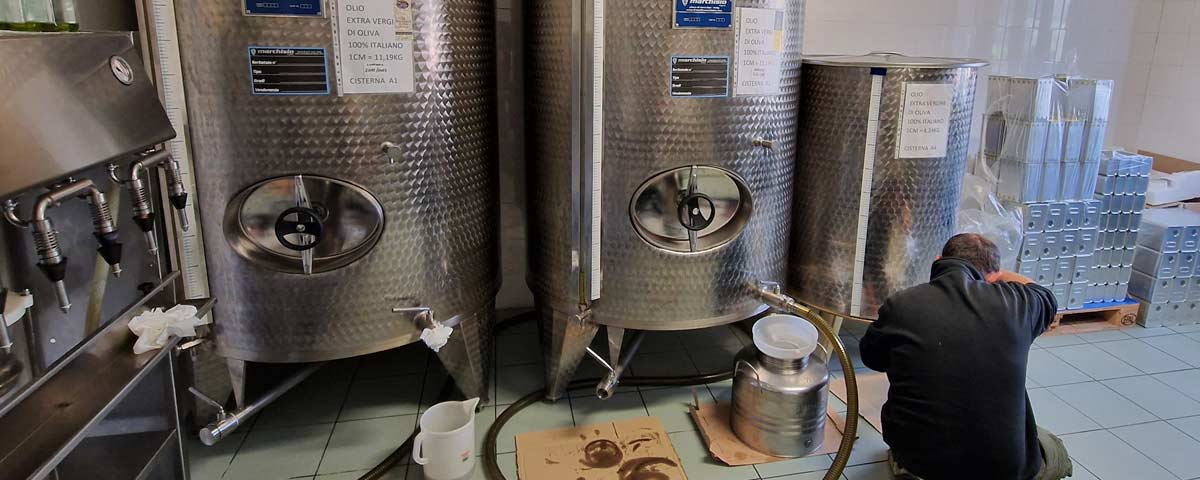
September 30, 2022: just before harvest.
Actually, the olive harvest begins now. “actually” because due to the drought this year almost no olives are left on the trees ☹. Almost all the trees are not worth harvesting.
A tragic situation all along the coast for all farmers. But we will try to get equivalent olive oil for our adoptive parents. Bianca is already talking to farmers from the mountains where the drought was not quite as bad.
Since there is no harvest this year, you now extend directly to next year after the harvest, so you get olive oil from your tree in any case.
In addition, a portion of each adoption fee goes into a newly established relief fund. “Rete Tesori della Riviera” is an aid organization that helps organic olive farmers to survive. This is so dramatic because the farmers have not been able to earn an income for two years and do not know how to feed their families.
March 16, 2022: We are waiting for rain.
What is great for vacationers is not good for us farmers. All of January and February were too dry. Clouds have finally been coming for a few days. But almost no rain comes to earth. It is important for the olive trees right now, because this is when the inflorescences are formed. So keep your fingers crossed that a lot will come down in the next few days.
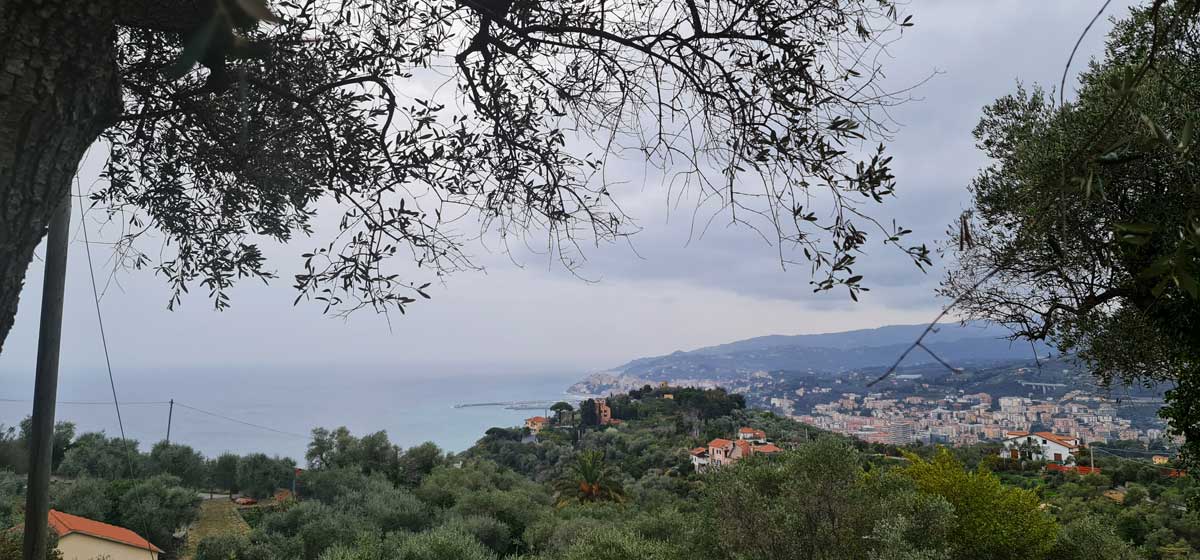
February 11, 2022: Important in February: Pruning and fertilizing trees.
There is a lot of work to be done in January and February. Our 1,100 trees from Sassolive, but also the many trees from other farmers, want to be prepared for the coming flowering year. That means everywhere in the country you can now see tons of olive branches from pruning the trees and it smells like fertilizer. To make your trees produce nice fat organic olives, we got a new organic fertilizer that is highly recommended by other organic farmers in Liguria…
Aid Fund Organic Olive Farmers Italy
Aid Fund Organic Olive Farmers Italy Italy: the rescue operation
At the end of 2021, olive producers in Liguria were faced with a particularly disappointing harvest, which presented them with considerable difficulties. Despite these adversities, they looked back on the above-average yields of 2020 and were confident that the situation would recover the following year. However, the reality of 2022 dashed all hopes: it was another year of disappointment and for 2023 there were many indications of an almost complete crop failure.
It is established agricultural knowledge that olive trees often go through a recovery period after a productive year, which usually leads to an alternation between years of high and low yields. The lower yield in winter was therefore not an immediate cause for concern for olive growers at first.
However, the situation quickly took a turn for the worse. Especially in January and February, the critical time for the blossoming of olive trees, there was a significant lack of rainfall. The lack of water at this critical stage of development caused the trees to reduce their flowering. This had a direct impact on the fall months, as fewer blossoms inevitably mean a smaller olive harvest.
Organic olive growers therefore started 2022 under difficult conditions. But the real blow came in the summer, when a prolonged period of drought hit the coastal regions and Liguria in particular. The already reduced number of olives suffered greatly from the drought and fell prematurely from the trees – a progressive loss that became noticeable week after week.
Now, shortly before the planned start of the harvest, there are hardly any olives left on the branches. This sobering fact leads to the conclusion that for many farmers the harvest is hardly worthwhile. The yields are so low that the harvest costs exceed the potential income, which leads to the complete failure of the harvest on some farms.
This year’s crop failure represents a total financial loss for producers of organic olives – on the back of an already low yield in the previous year.
What’s more, after this autumn’s failed harvest, the financial outlay for next year is imminent: pruning the trees, fertilizing with organic fertilizer, especially in times of rising prices. The cost of protecting the trees and many other expenses are an additional burden for farmers. They are therefore faced with the challenging situation of having to bear high expenses without any income from the sale of olives.
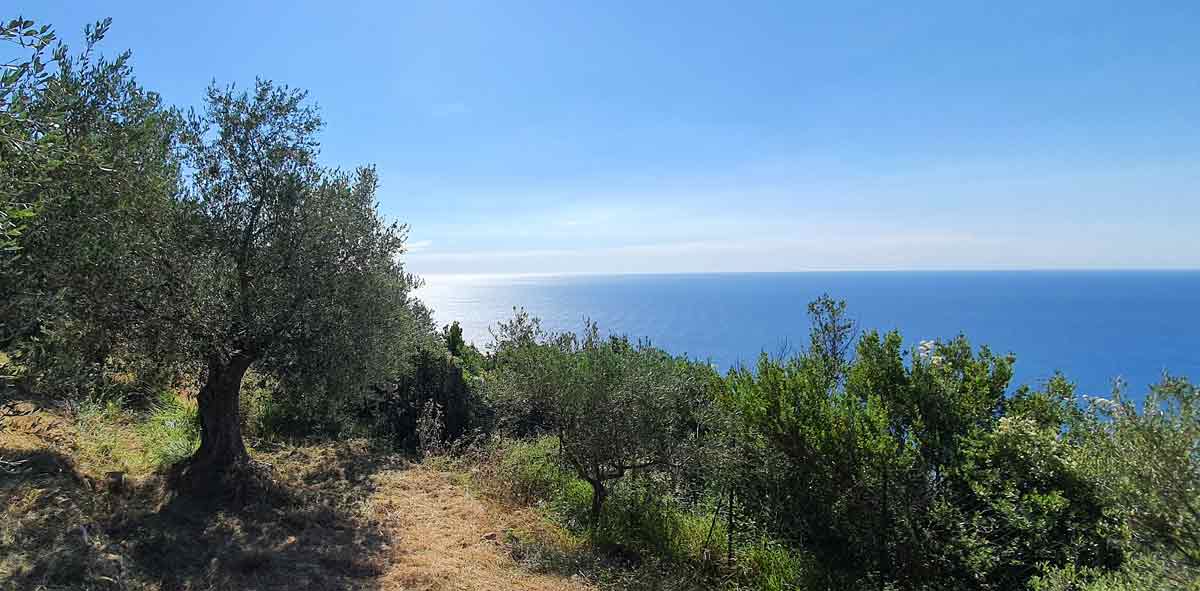
The consequences of the 2022/23 climate crisis for organic olive growers
Some organic olive growers in the region are at a crucial turning point in their careers. Over the past three years, they have been confronted with continuous losses in their income, while at the same time the operating costs of their farms have been steadily increasing. This has brought some of them to the brink of a seemingly hopeless situation, with decisions that could have far-reaching consequences not only for their own future, but also for the ecological diversity and economic stability of the surrounding area.
The withdrawal of an organic olive grower from his business not only means the end of an environmentally friendly farming approach, but also carries the risk of a shift away from organic methods towards conventional farming out of economic necessity. The possible use of artificial pesticides and fertilizers could have serious consequences for soil and water quality and biological diversity.
In addition, financial constraints could lead some farmers to reduce or completely abandon essential sustainable practices such as the use of organic fertilizers, which would negatively affect soil fertility and agricultural productivity in the medium to long term.
Another conceivable step for some could be to give up olive production completely and turn to alternative agricultural methods or even other forms of livelihood altogether, which would result in a profound change in the cultural and economic structure of the region.
Some olive growers have already taken on additional employment, be it in public transportation, education or other sectors, in order to provide financial security for their families. However, this means that they have less time to look after their farms, which in turn could have long-term negative effects. Neglecting the olive groves can lead to further yield losses and thus further drive the cycle of financial bottlenecks and declining agricultural performance.
Foundation of the Aid Fund Organic Olive Farmers Italy "Rete Tesori della Riviera
In the midst of the serious crisis that organic olive growers in Liguria are currently experiencing, a committed group of organic olive growers has launched a remarkable project that not only aims to safeguard organic farming in Liguria, but also to promote it. This initiative is called “Rete Tesori della Riviera” and represents not only a strong sign of solidarity and community, but also a deep desire to bring about positive change in these difficult times.
“Rete Tesori della Riviera ” is a non-profit association that brings together organic farmers and service providers from the organic olive oil production sector along the western Ligurian coast. The overarching goal of this organization is to mitigate the most severe effects of the ongoing drought and at the same time secure the livelihood of organic olive farmers.
To achieve these goals, the organization has introduced a number of supporting measures:
- Purchasing groups: These enable the joint purchasing of fertilizers and organic pesticides, which reduces costs and allows resources to be used more efficiently.
- Sharing labor: Farmers support each other in caring for the olive trees to reduce the workload and increase yields.
- Subsidization of materials: The organization provides financial support for the purchase of fertilizers and other necessary materials in order to reduce the financial burden on farmers.
- Aid money in extreme cases: In situations where farms are on the verge of bankruptcy, the organization provides aid money to secure the farmers’ livelihoods.
This program has not only ensured the survival and continued existence of organic farmers in the Imperia region, but also serves as an incentive for conventional farmers to switch to organic farming.
One specific project for which the aid organization is currently in urgent need of donations is the procurement of a shredding machine. Background: The European Union has introduced a subsidy program that stipulates that farmers are no longer allowed to burn tree cuttings, but must shred and compost them. It is therefore necessary to purchase a chopping machine that can be used by any farmer as soon as it is needed. Around 15,000 euros are needed for this project.
The organizer and one of the driving forces behind the organization is Alberto Dalpiaz, who is also the Vice President of the Organic Farmers’ Association in Liguria and the Slow Food Association. For him and his family, there is no alternative to sustainable farming on the Organic Farm San Martino. Their farm is based on a deep respect for the natural beauty and value of the land in which it is located. From the very beginning, even before organic certification existed, they implemented the idea of an organic existence on their San Martino farm.
To support this impressive project, a donation account is currently being set up for the “Organic Olive Farmers Italy” relief fund. Anyone who would like to contribute to helping the organic olive growers in these difficult times can offer their support.
Contact information for support and donations:
Rete Tesori della Riviera
Piazza Dante Alighieri 11
18100 Imperia/IM
Phone: +39 335 8478123
VAT ID no. 01626070088
Alberto Dalpiaz and the entire “Rete Tesori della Riviera” community put their heart and soul into preserving the tradition and quality of olive oil production in Liguria. Their tireless commitment deserves our recognition and support.
How you can help organic farmers in Italy
Support through an organic olive tree sponsorship:
Donate via Paypal:
Here are the bank details for bank transfers:
Bank details for donations:
Owner: Rete Tesori della Riviera
Bank: BANCO BPM
IBAN: IT 79 U 05034 10500 000000022711
BIC: BAPPIT21F20
Sassolive - our mother farm
Sassolive – azienda agricola – the mother of the Organic Farming idea
Organic Farming Italy would not exist without the Sassolive Organic Farm. This wonderful place right by the sea, inseparably linked to the centuries-old tradition of growing olive trees – then the paradgime change to sustainable agriculture. All this was the origin of the vision of bringing organic farming closer to humans.
That’s why Bianca’s Farm is the origin of our initiative to expand organic farming around Sassolive. It cultivates over 1,100 olive trees, the oldest of which have a hundred years on the crowns.
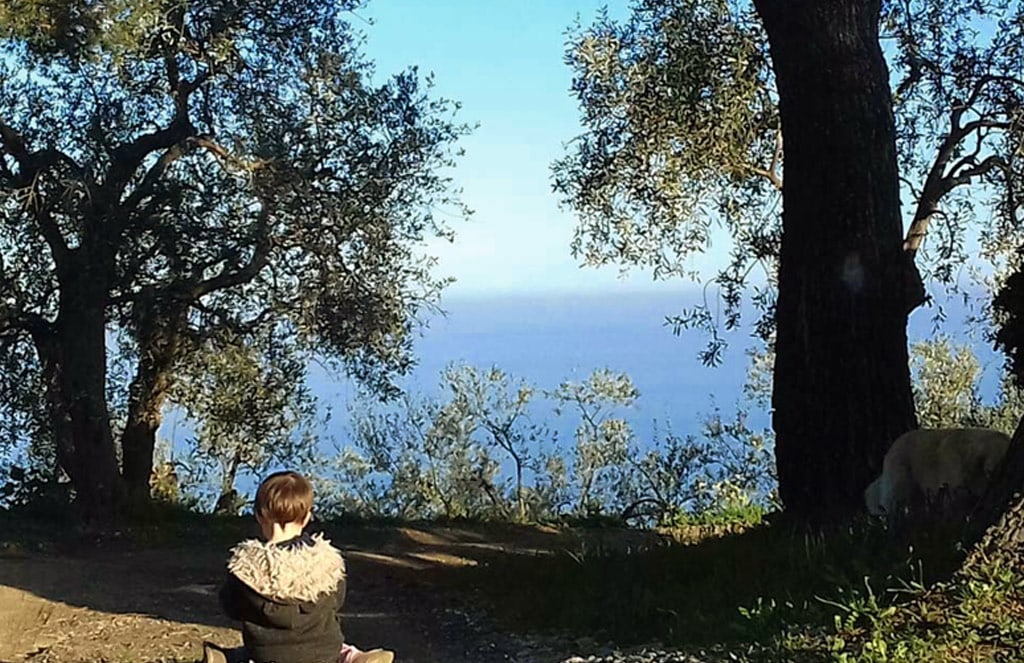
Brief on our history of Sassolive
“We have been producing olive oil for five generations. My great-great-grandfather Mario Novaro started in early 1900, when the olive oil was still bottled in metal cans. Mario exported not only olive oil, but also Italian culture: for example, he published a small book through which he advertised his olive oil, but also presented profiles and works by some aspiring Italian artists. (on www.fondazionenovaro.it you can see the whole story in Italian). Now times have changed, we have been producing extra virgin olive oil for years only from the olives from our own organic park, which is organically certified.
Me and my team do not value the amount of our organic products achieved, but the high quality and harmony with nature during production. But also on respect for the trees and for the land on which they took their roots, just like us. This country is really a special place.”
The mountain of Torre Alpicella
Over 7 hectares of organic park overlooking the sea, guarded by the remains of an old Saracen tower, the Torre Alpicella. The special geographical location offers a temperate climate in winter and a fresh summer. Olive oil has been produced on this particular spot of earth for many generations. Rosetta – Bianca’s great-grandmother – was already engaged in the nature-related care of olive trees, vegetables, orchards and our vineyard.
In recent decades, the inhabitants of the area have been concerned with housing, so the barn has become Villa Bianca, the wooden shed has become Villa Alpicella, the old stable is now Casa del Cedro. Other properties still need to be renovated, we look forward to the next steps. We are also pleased to announce that San Martino has joined Organic Farming Italy. A real enrichment.
Address and contact:
Sassolive – azienda agricola
Via Diano Calderina N.284 Imperia
E-mail: aaa.sassolive@gmail.com
Telephone: +39 347 5976928
P.iva: 01644400085





